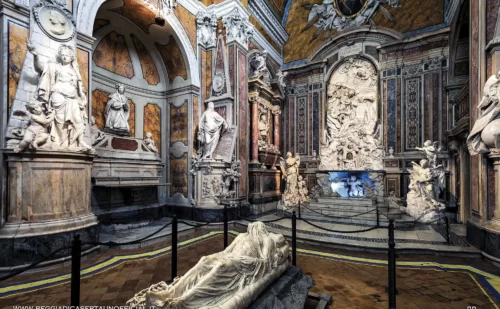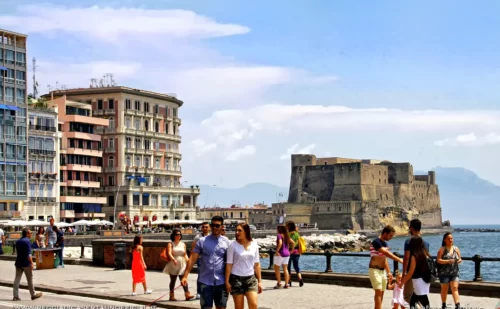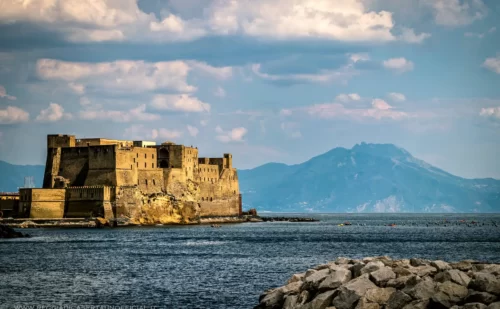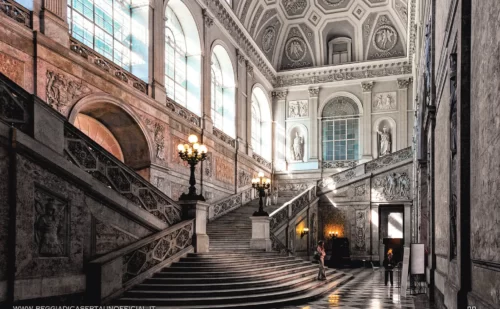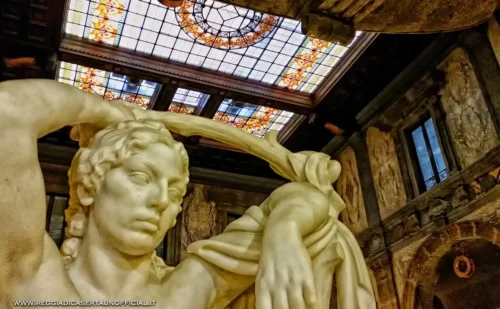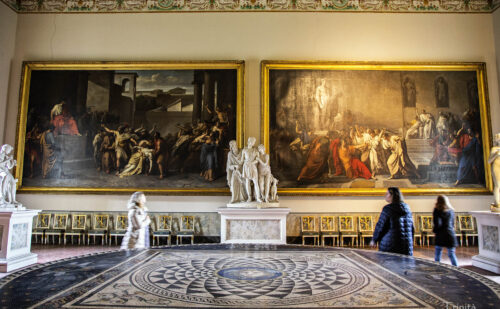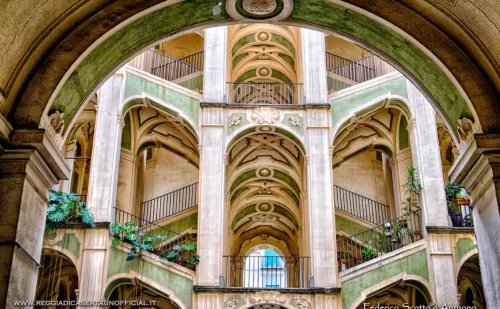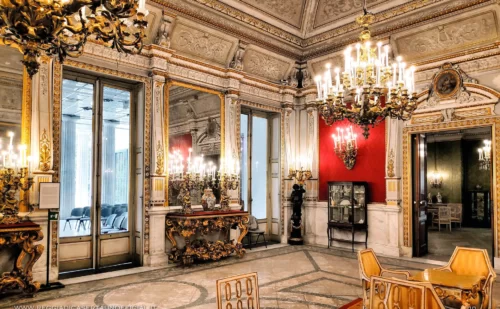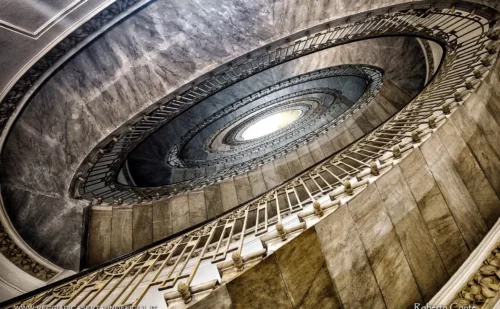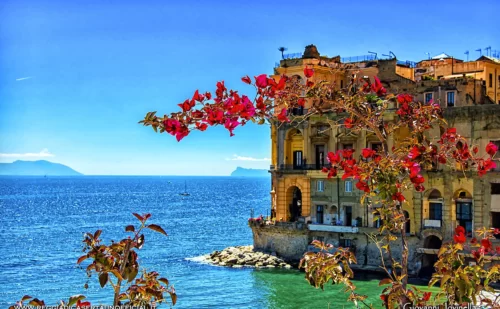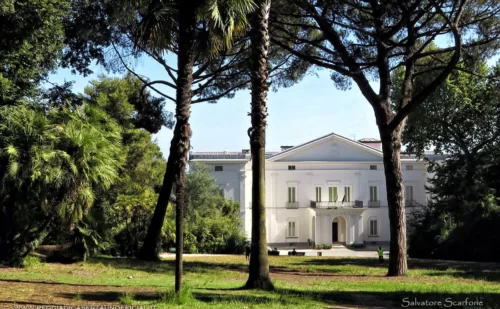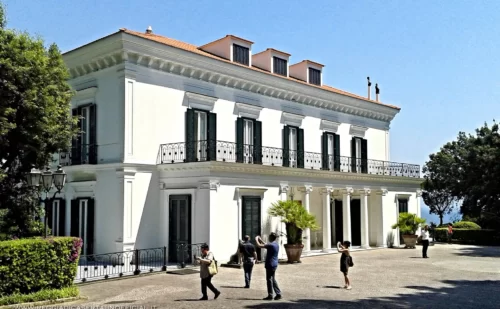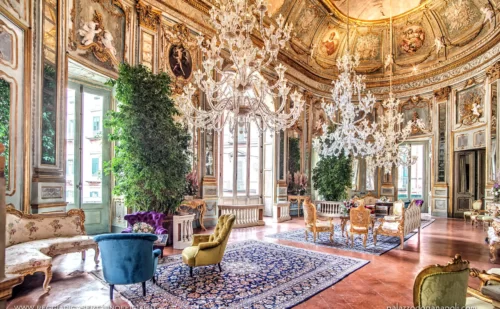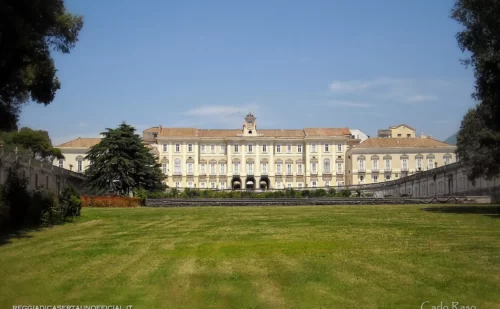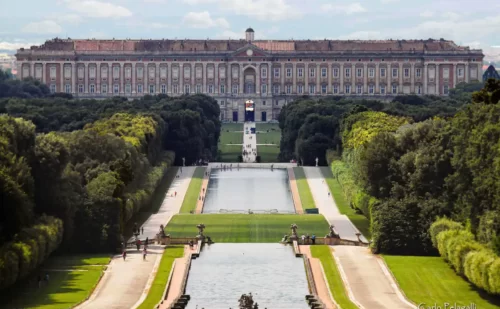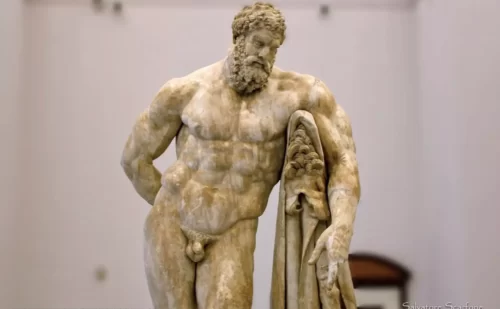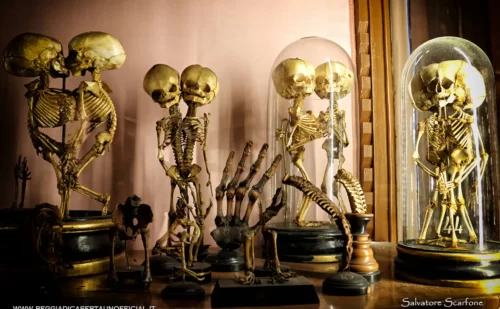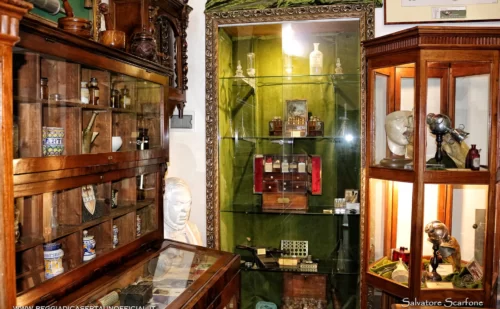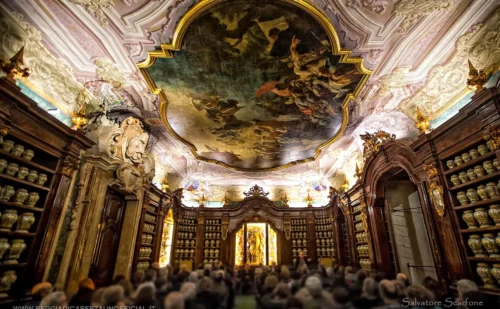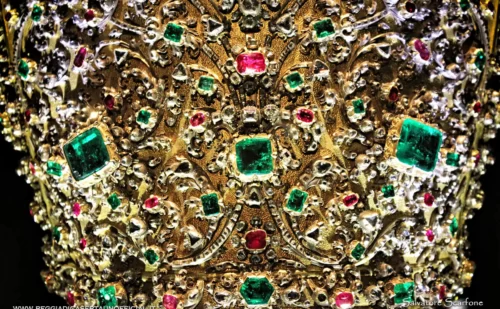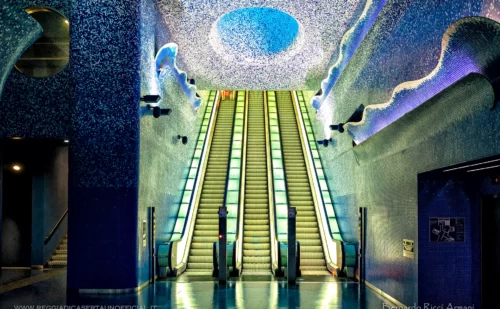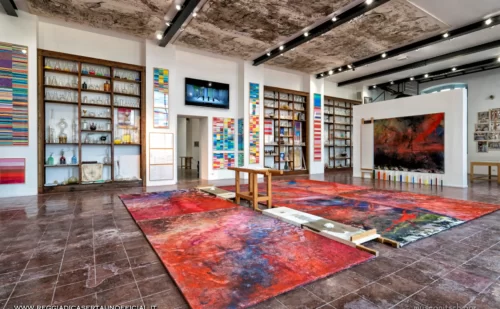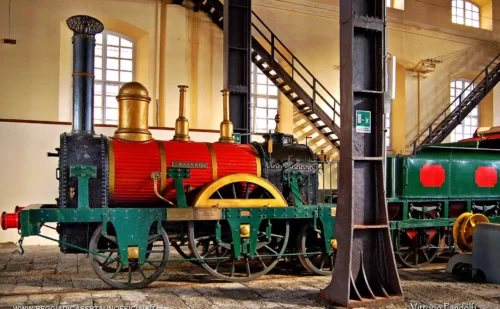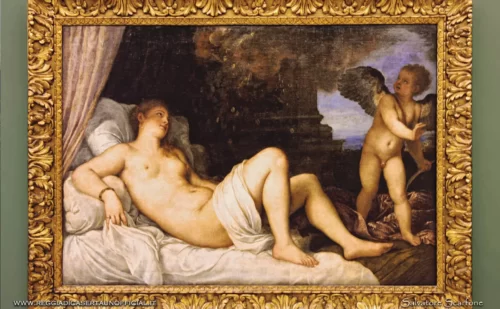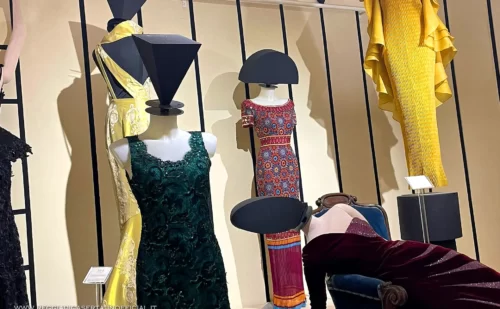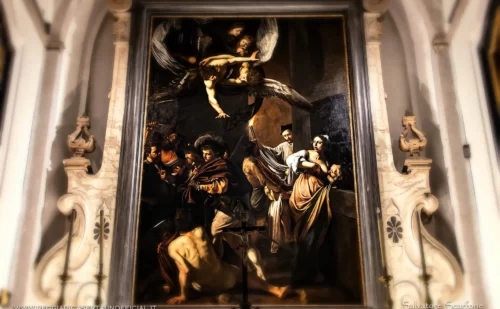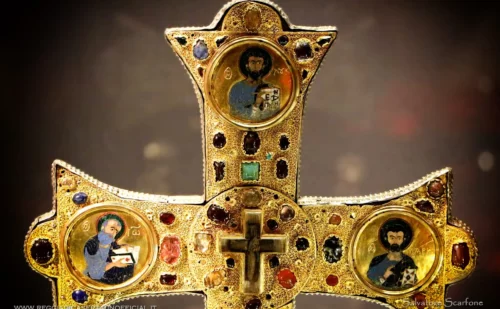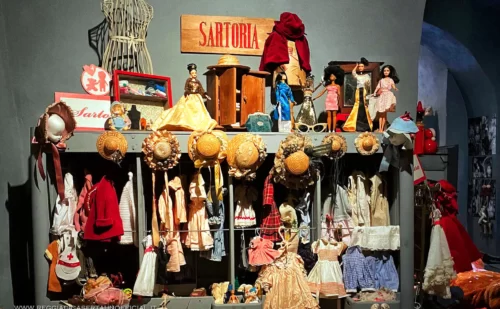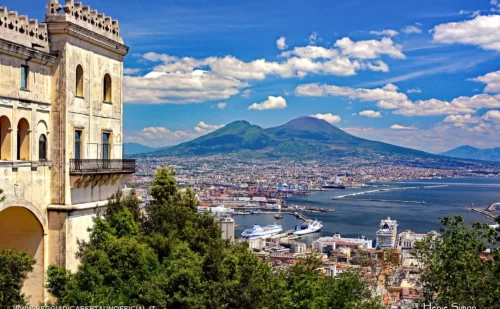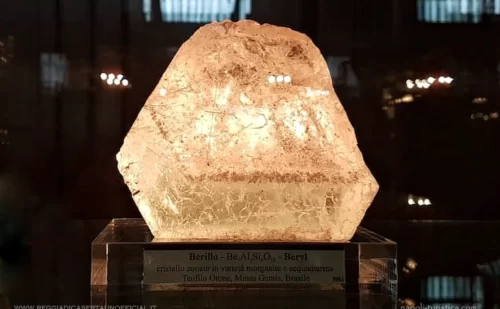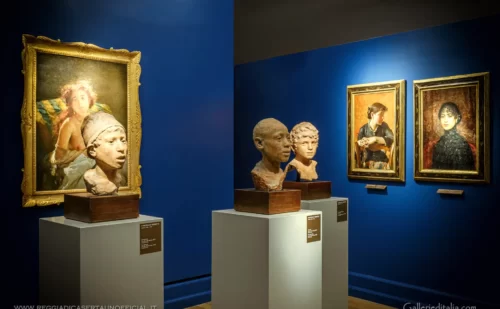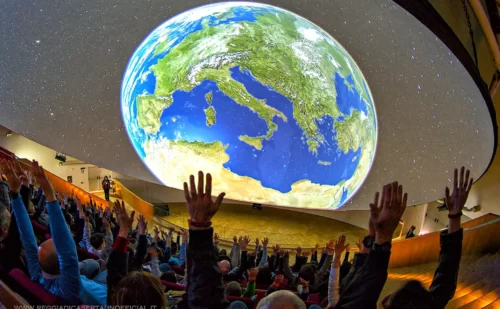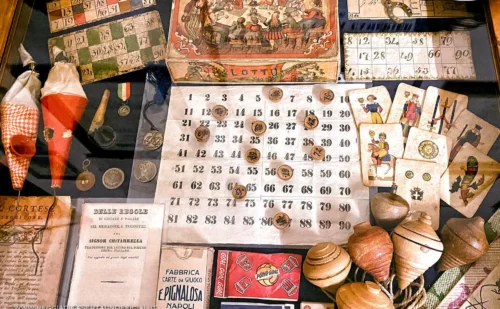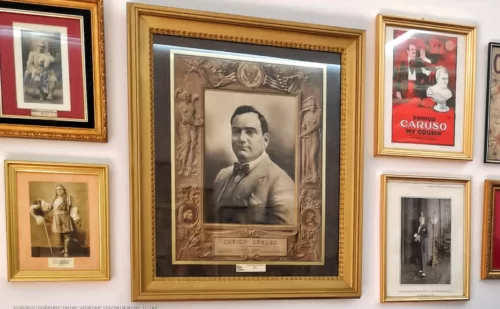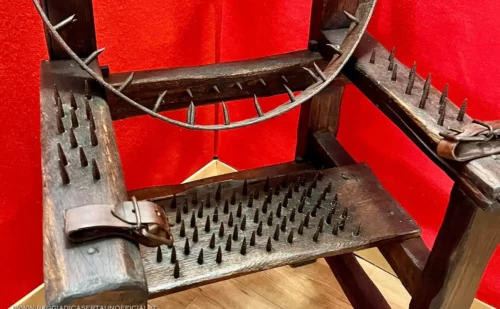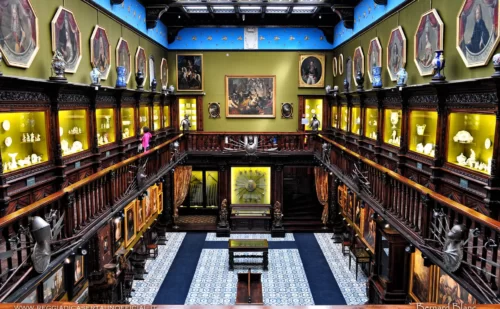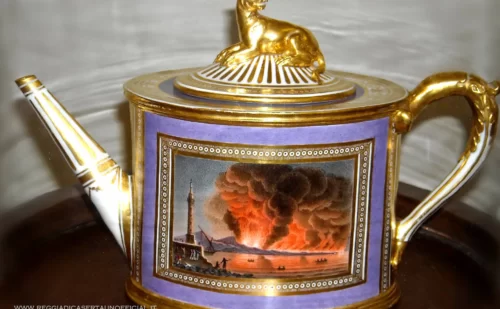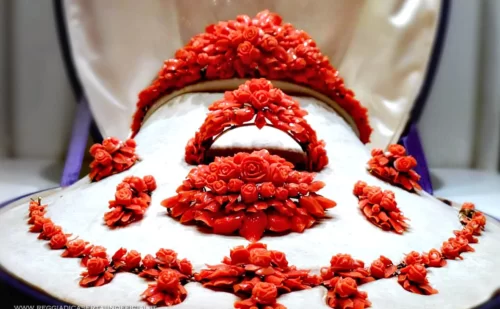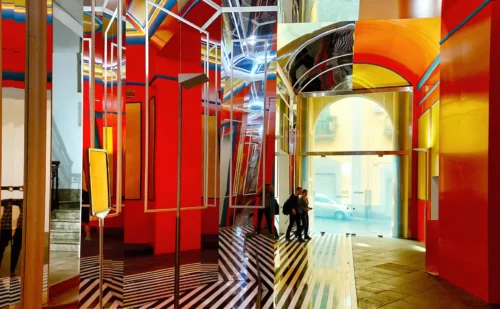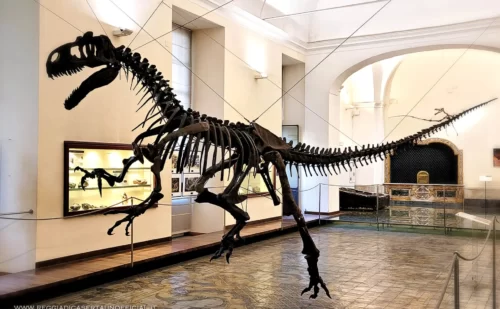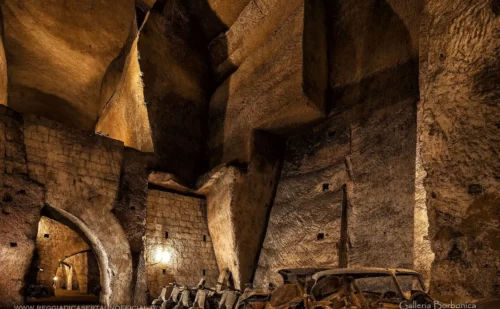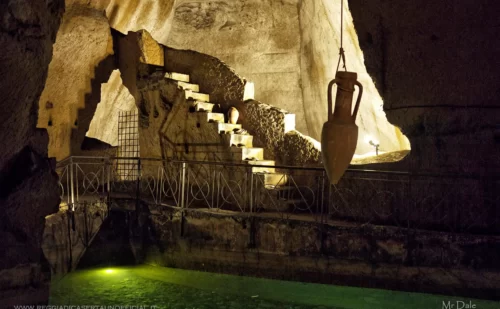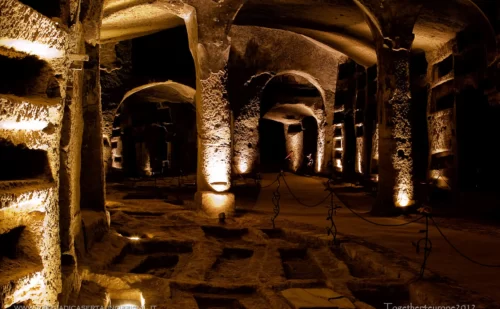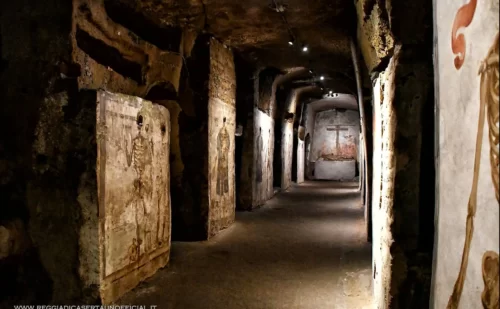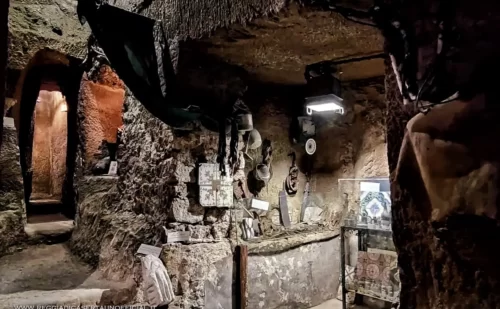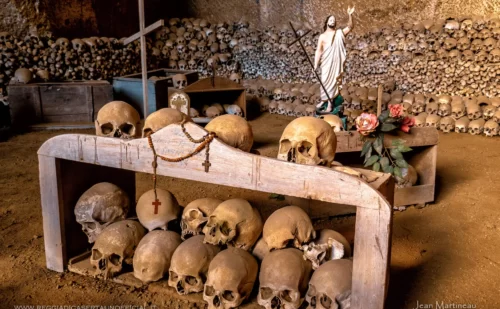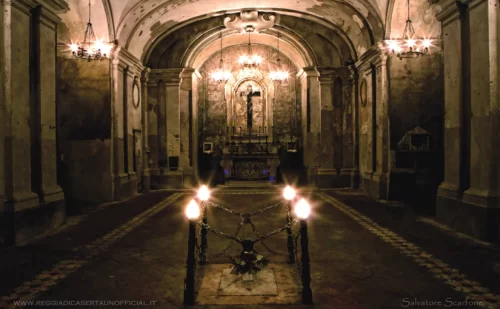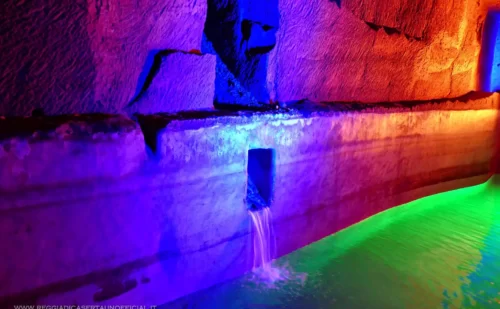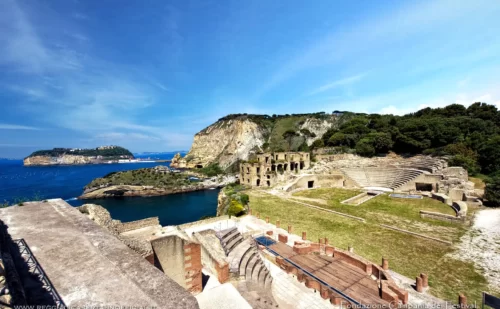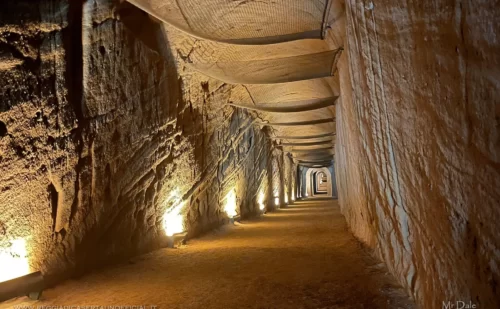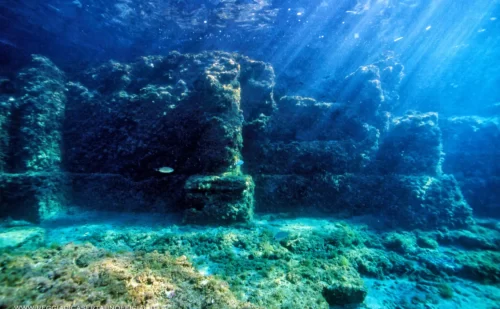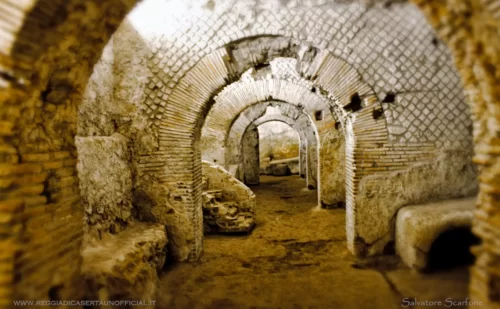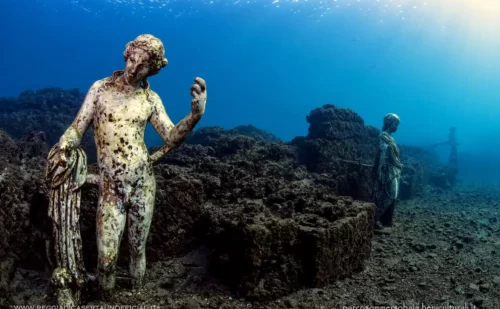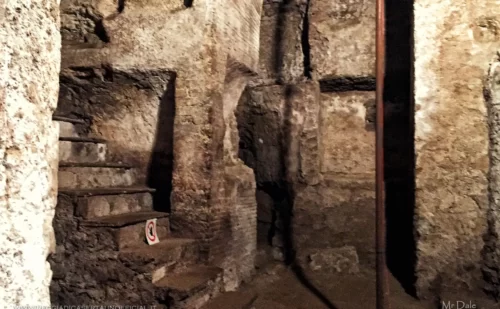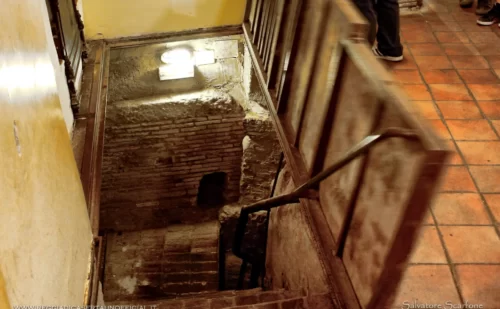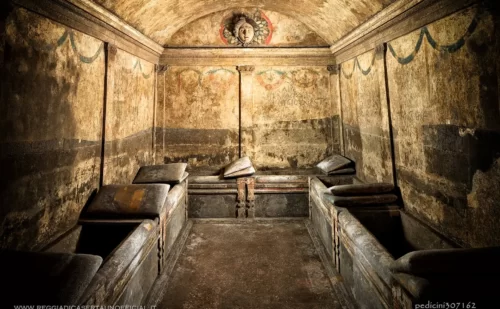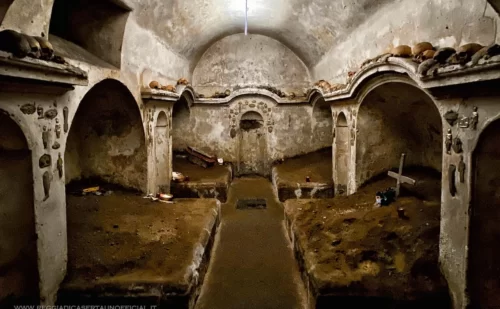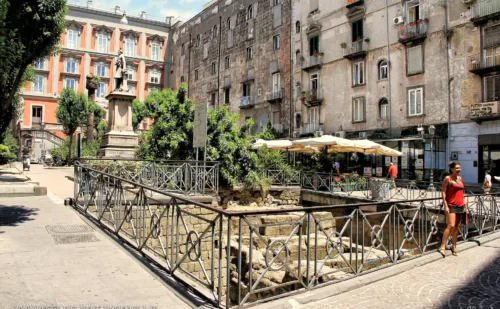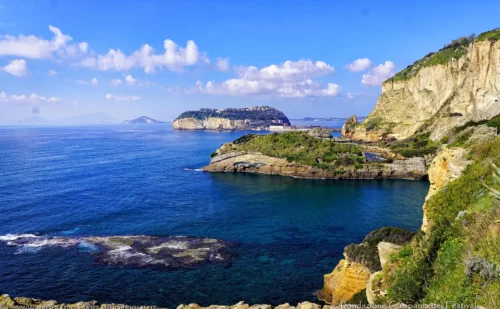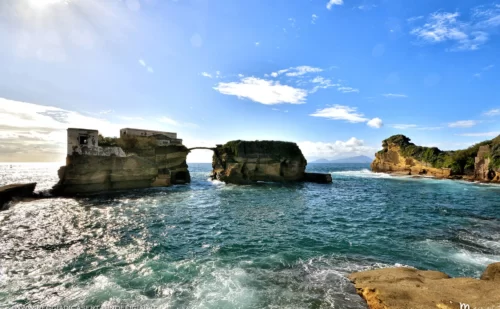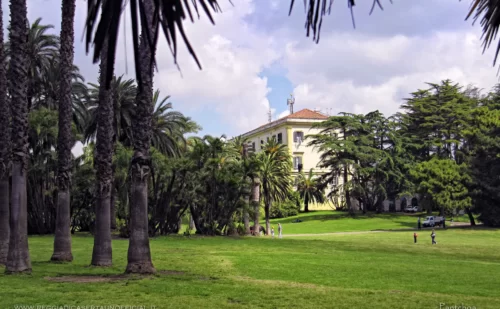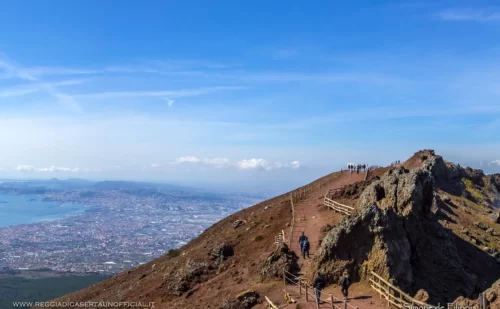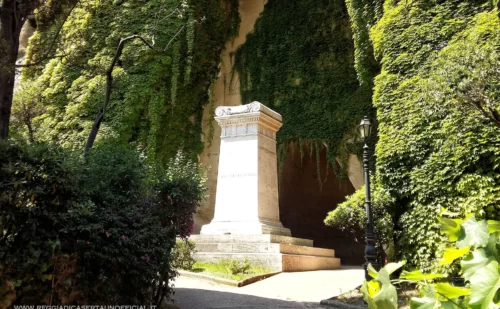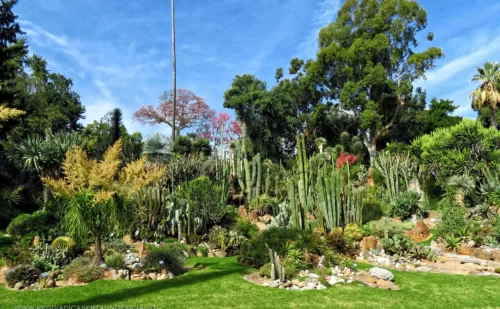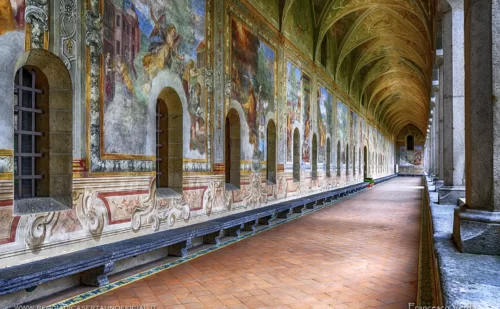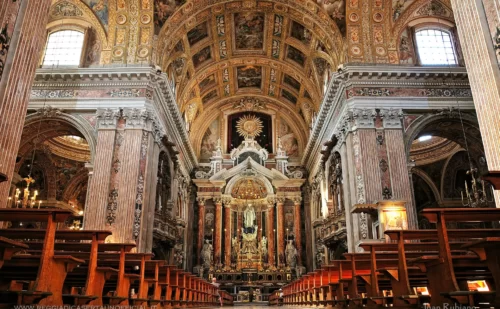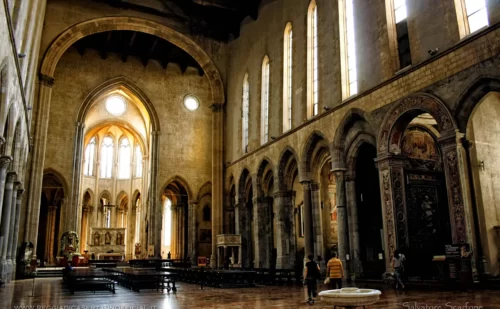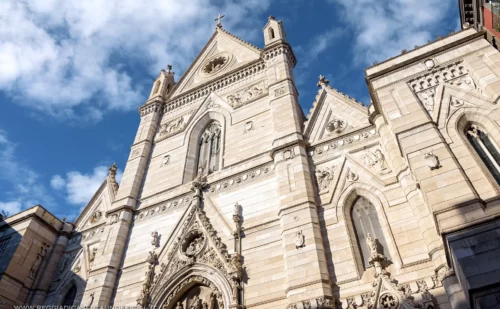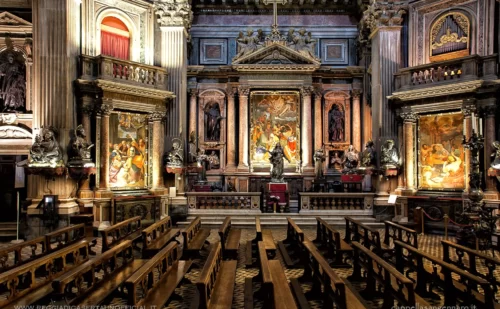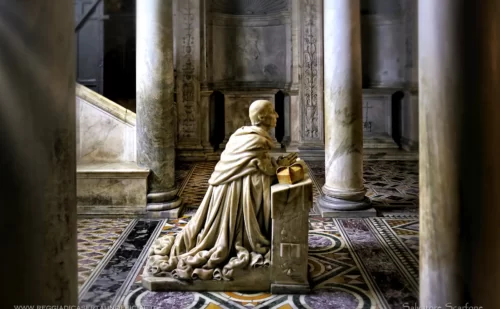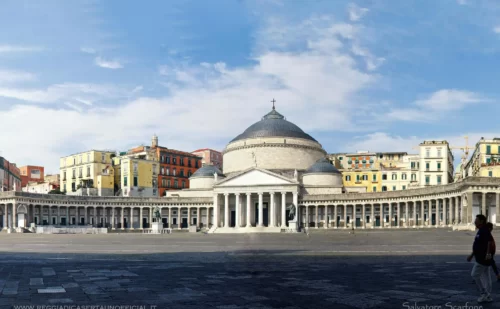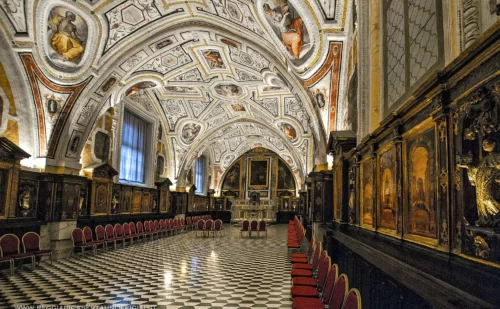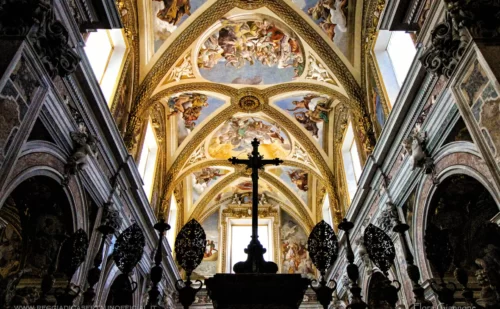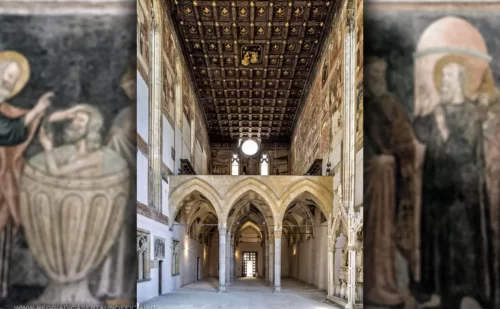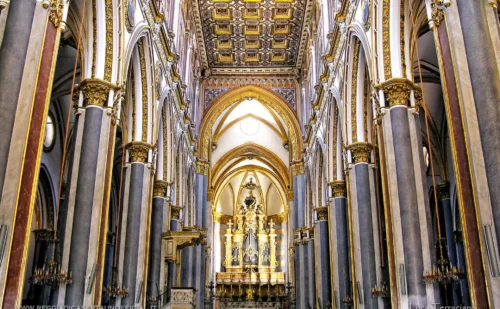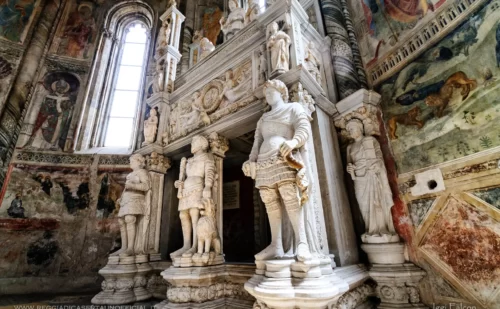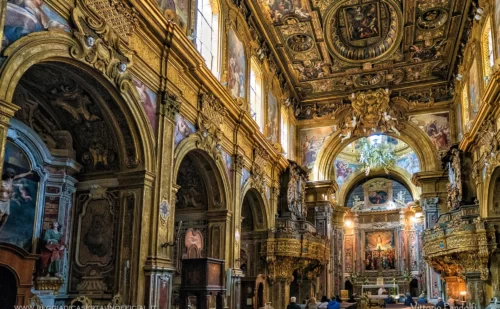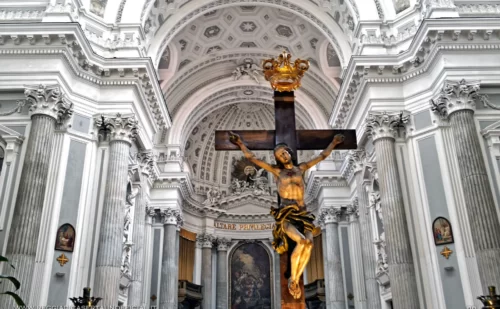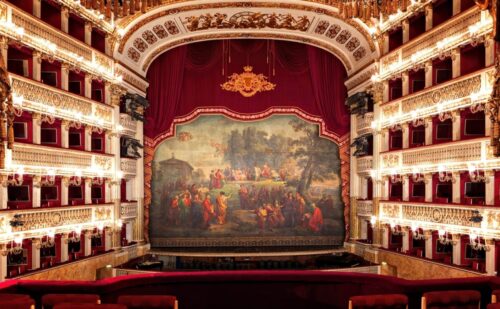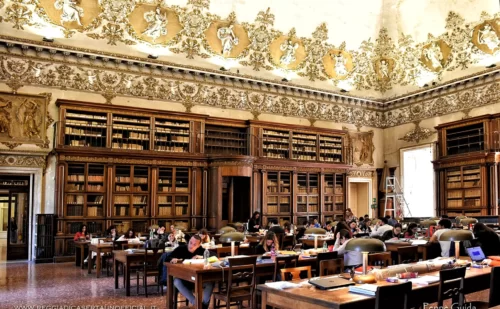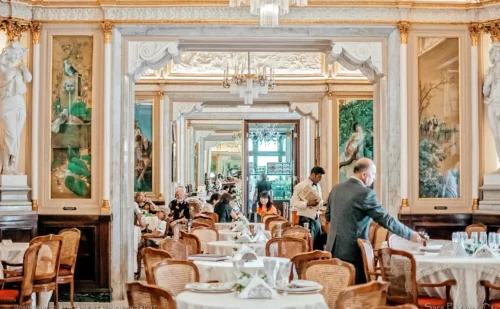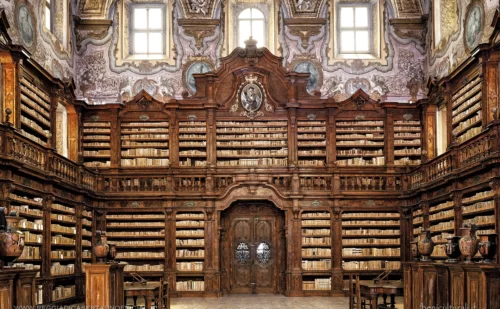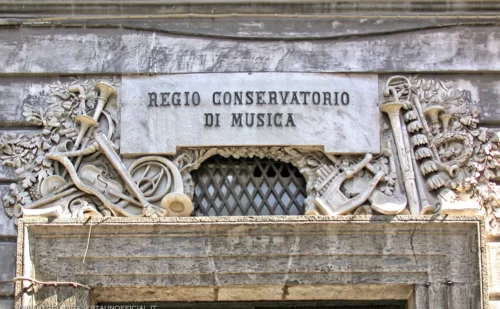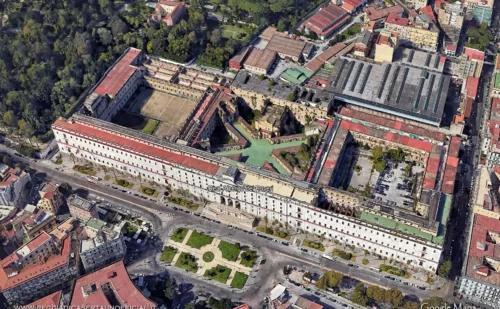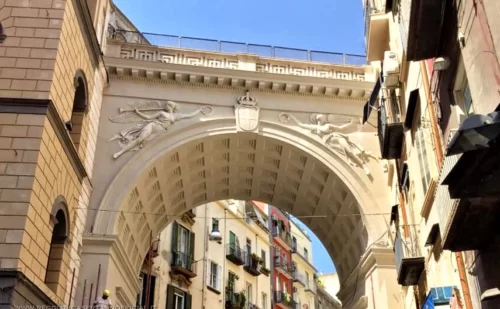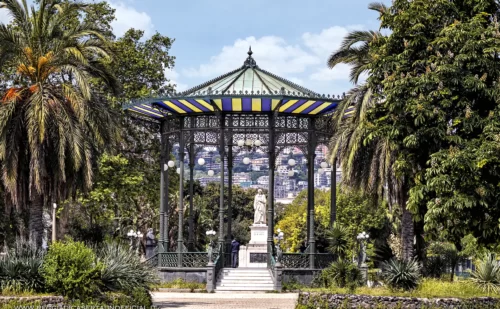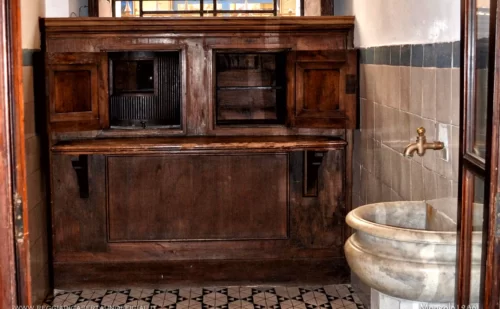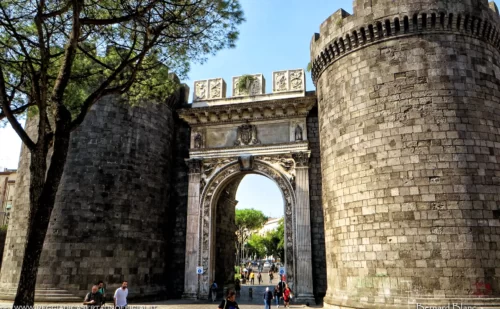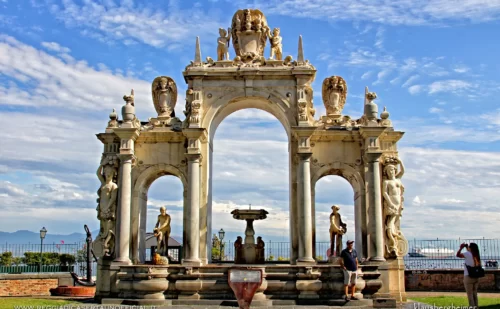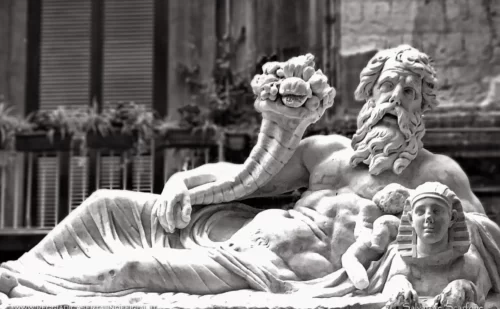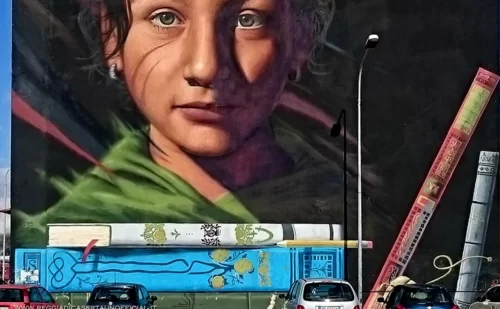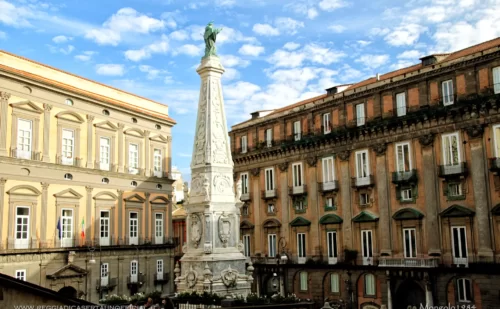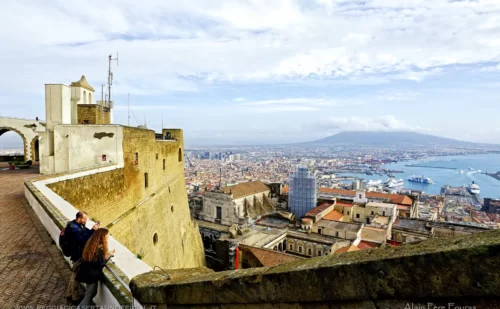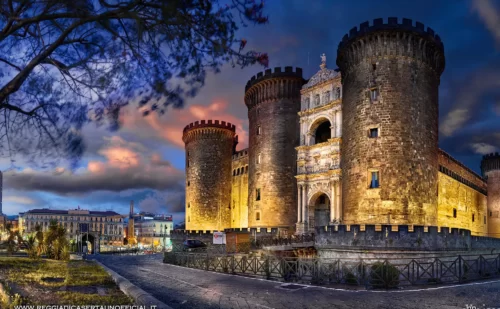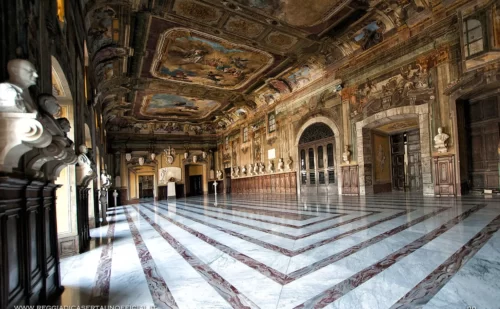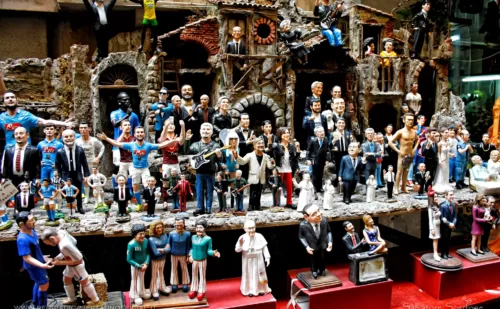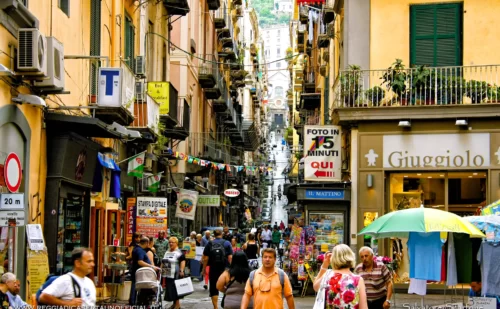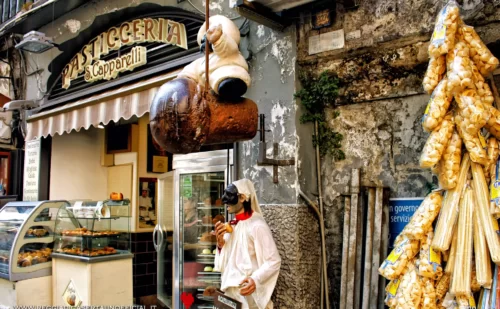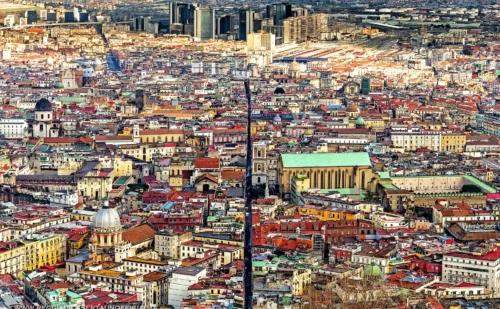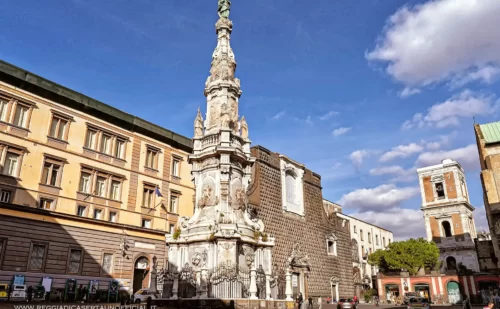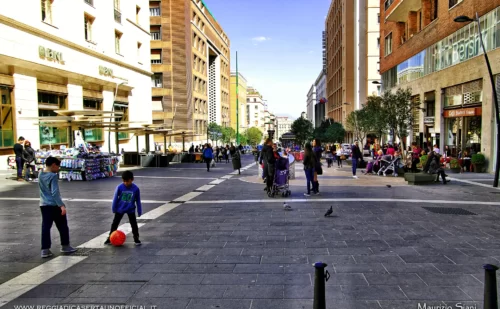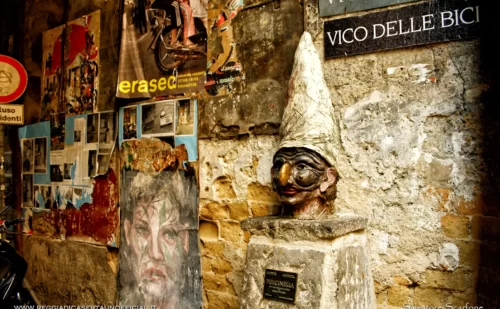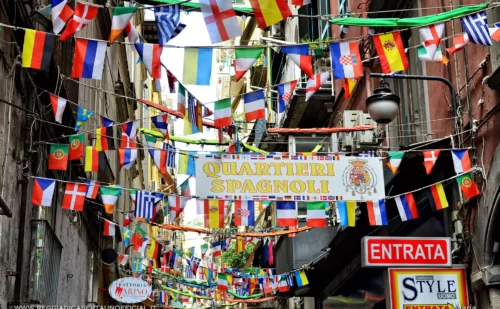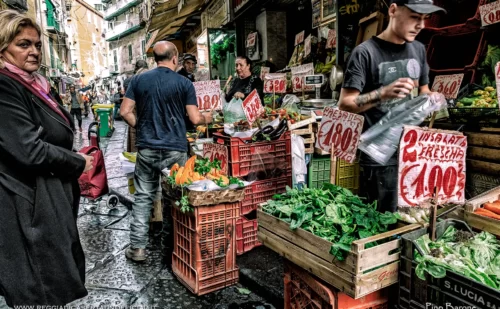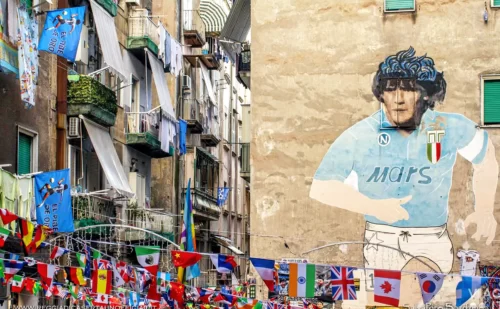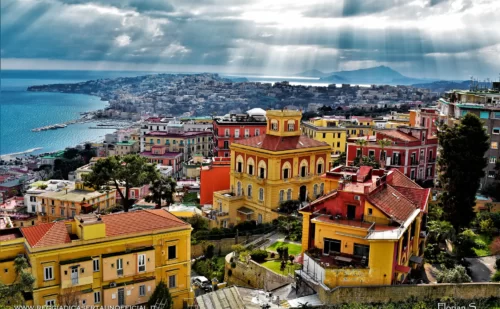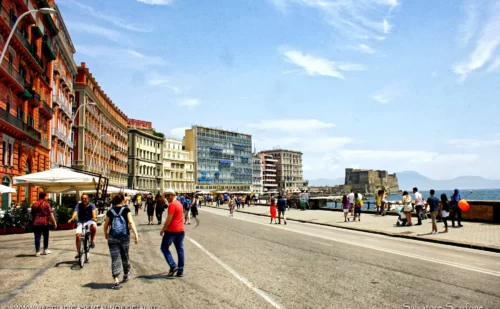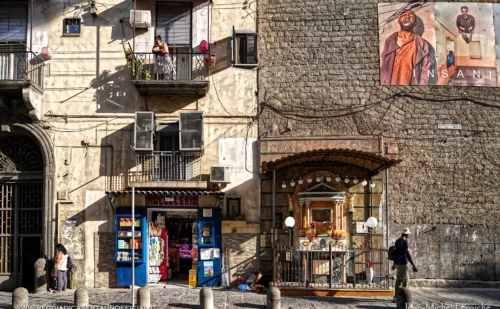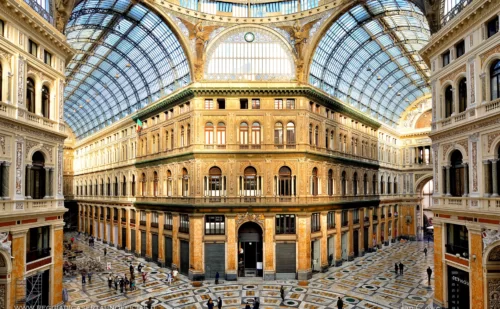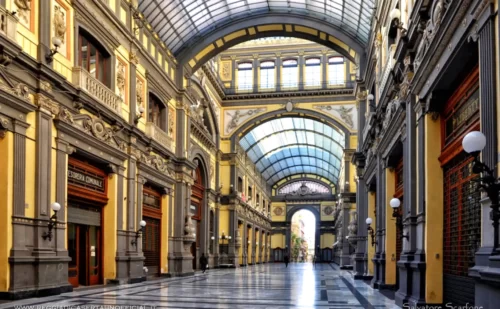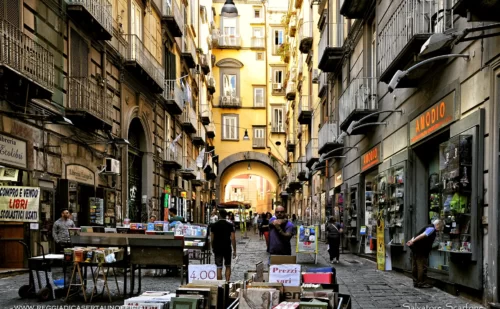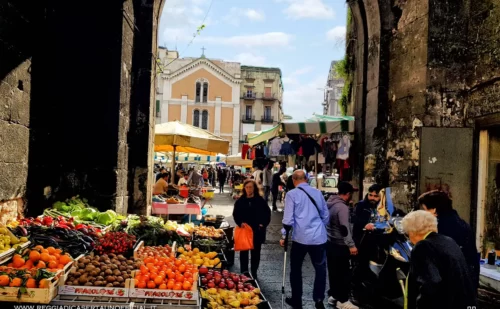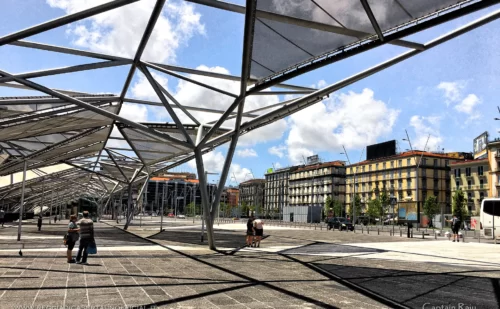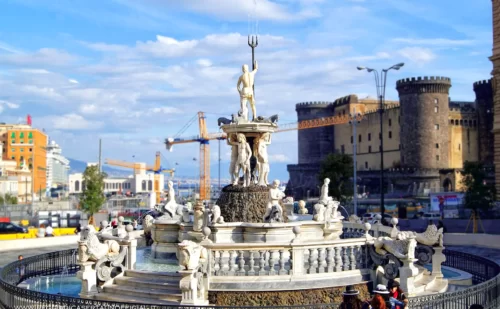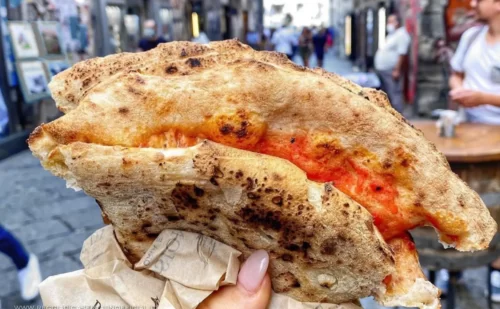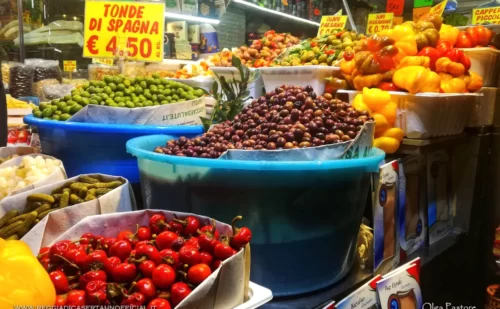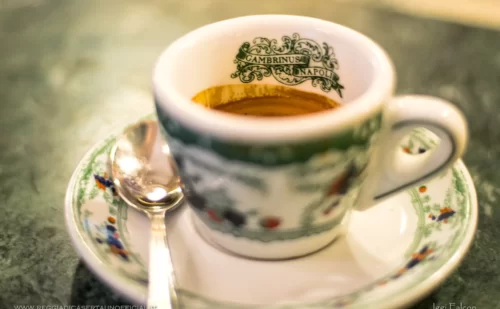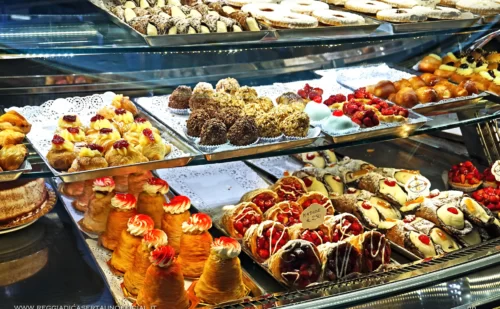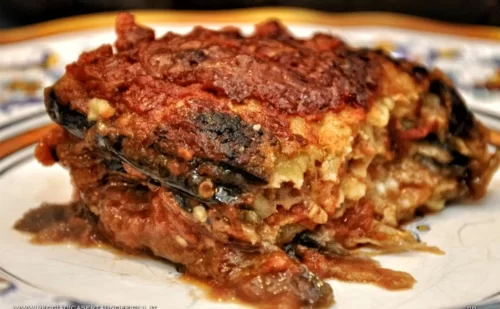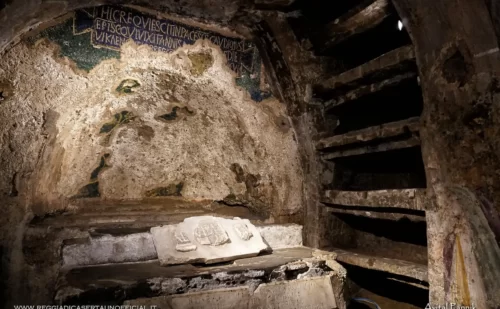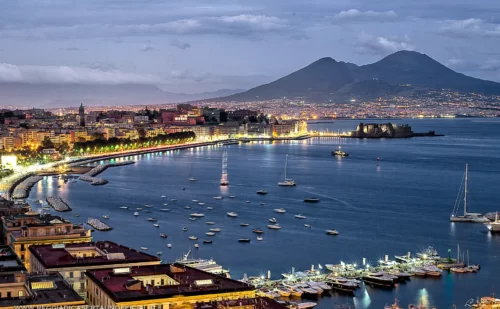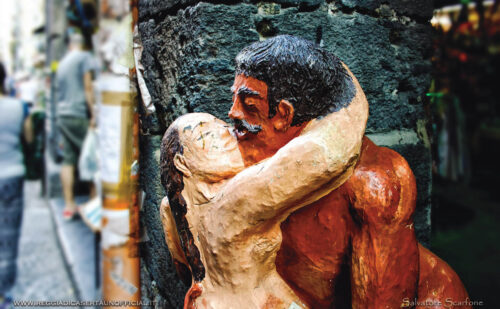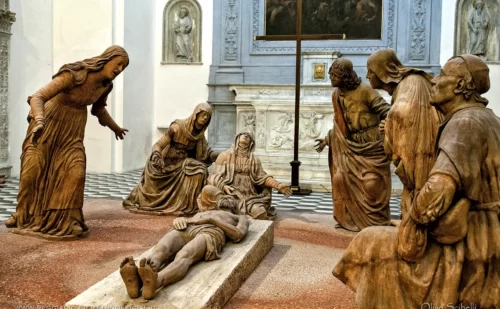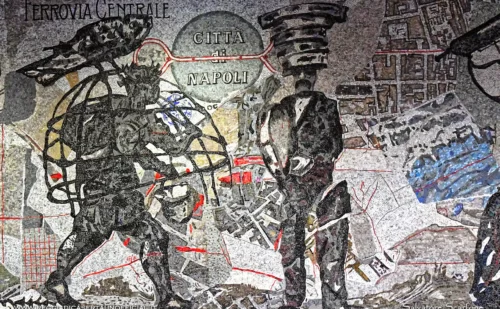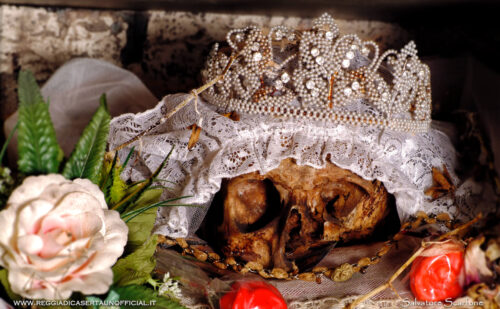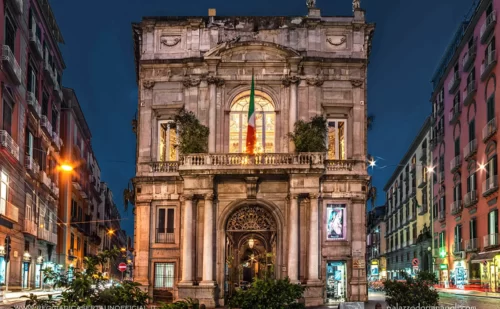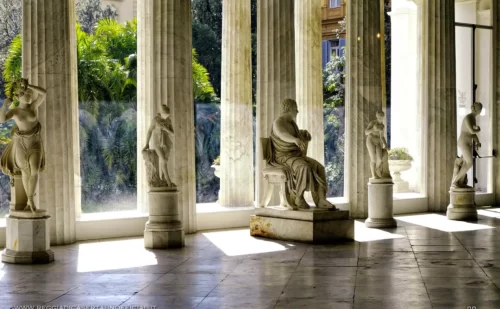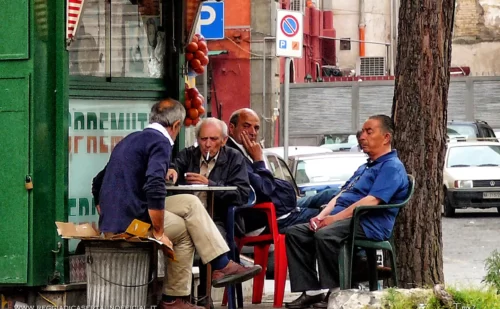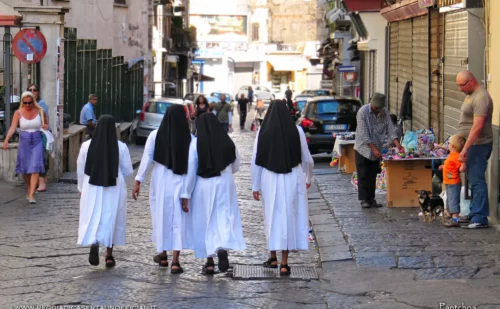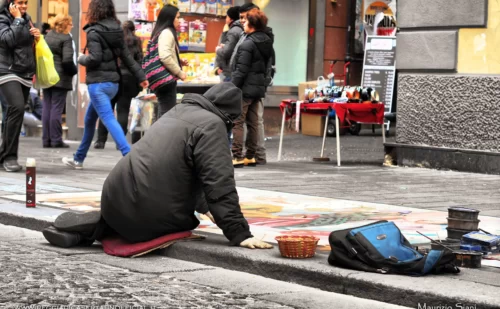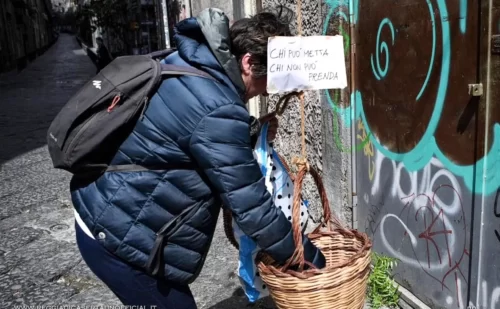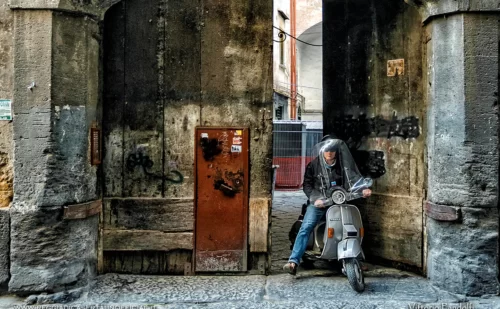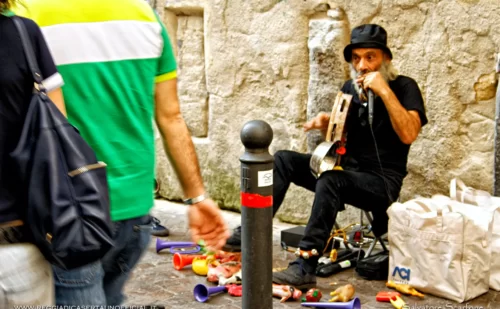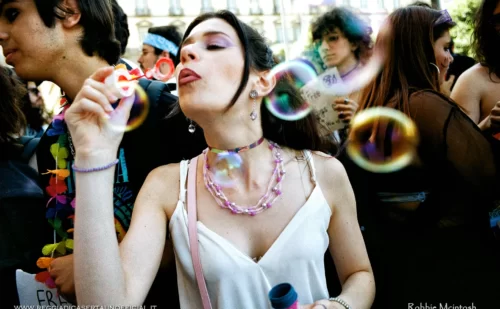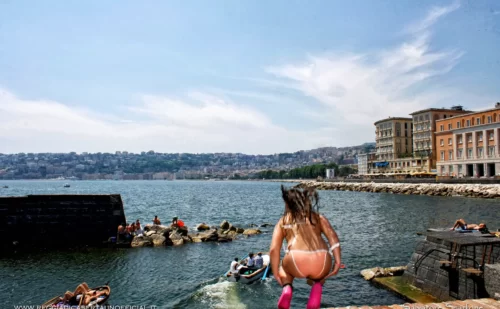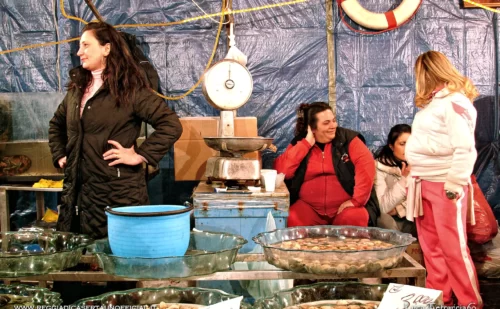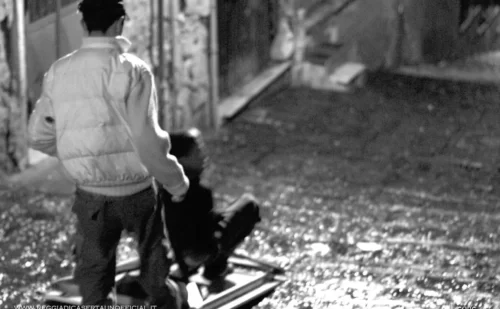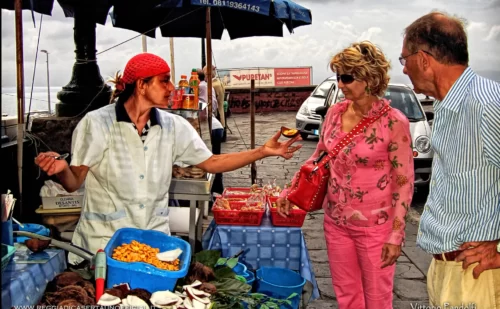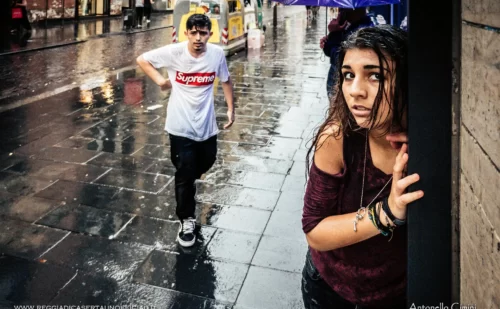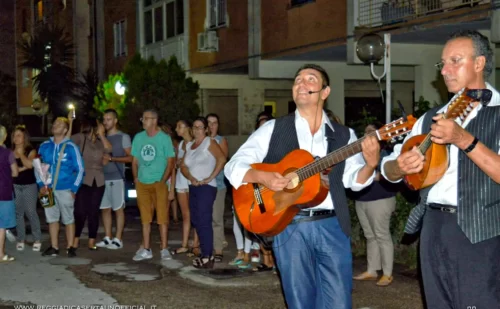Naples, a city with 3000 years of history, a true symbol of Italy and a Unesco World Heritage Site. Find out what to see and organize your visit. Buy tickets, book hotels, guided tours, trains and planes.
One of the things that will make you love Naples are not only its attractions which, in part, you can admire on this page, but the fact that, wherever you come from in the world, you will immediately feel at home. And you will also realize that the rumors about Naples are just exaggerated clichés and you will be eager to return.
What interests you?
What to see in Naples
What you find on this page is only a part of the infinite attractions of Naples
Palaces of Naples
Naples has four royal palaces and an infinite number of noble palaces from every era
Royal Palace
Born at the end of the 16th century, the Royal Palace of Naples was the seat of the Spanish viceroys, of the Bourbons and of the Savoys. In addition to stupendous halls in Baroque and neoclassical style, it boasts a spectacular monumental staircase, hanging gardens and overlooks the sea directly. The building also houses the National Library of Naples.
Zevallos Stigliano Palace
Palazzo Zevallos-Stigliano takes its name from the rich merchant who ordered its construction. Today it is a splendid palace that combines Baroque, Neoclassical and Art Nouveau interiors
Capodimonte Palace
Born on the will of King Charles of Bourbon to house part of the Farnese Collection inherited from his mother as well as as a royal residence, the Capodimonte Museum boasts collections of international importance whose works are often present in art history books. These works range from decorative art, to ancient and contemporary paintings, weapons and armor, drawings and prints. Not to be missed is the Capodimonte Porcelain Parlor and the large park that surrounds it
Palace of the Spaniard
Palazzo dello Spagnolo dates back to 1738 and is a famous building in the Rione Sanità, well known for its particular facade and entrance staircase.
Villa Pignatelli
Splendid neoclassical villa with garden, Villa Pignatelli is located in Chiaia and allows you to truly immerse yourself in the nineteenth-century environments. Richly decorated and perfectly furnished, it also houses a rich collection of ceramics.
Mannajuolo Palace
The work of the architect Giulio Ulisse Arata, Palazzo Mannajuolo is a splendid Art Nouveau building in which its famous ovoid staircase that seems endless stands out.
Donn'Anna Palace
Palazzo Donn'Anna was built in the mid-1600s on the wishes of Princess Anna Carafa della Stadera, but remained unfinished. Today it is impossible not to notice it from the coast, with its ruined and fascinating appearance, which can be visited in part.
Villa Floridiana
Villa Floridiana was born as a gift from King Ferdinand IV of Bourbon to his beloved second wife, Lucia Migliaccio Duchess of Floridia (hence the name Floridiana) who could not become queen as she was of lower rank. Designed by Antonio Niccolini, it has a 7-hectare park and at the time it also had a zoo.
Villa Rosebery
Villa Rosebery is located in Posillipo, and is the Neapolitan residence of the President of the Italian Republic. Built by a Bourbon officer, it was later bought by Prince Louis of Bourbon, brother of King Ferdinand II. Neoclassical in style, it is surrounded by a seven-hectare park and a panorama of the gulf
Doria D'Angri Palace
Palazzo Doria D’Angri is a building in Via Toledo owned by the family of the same name. It was redesigned by Luigi Vanvitelli, with contributions from Ferdinando Fuga and Mario Gioffredo, but the current appearance is essentially due to Carlo, Vanvitelli’s son. The artists who took care of the decoration were the same of the Royal Palace of Caserta. It is currently a hotel.
Royal Palace of Portici
The Royal Palace of Portici was built in 1738 at the behest of King Charles of Bourbon and Queen Amalia in love with the beauty of the place, and its creation stimulated the nobility to create the other palaces that gave rise to the Golden Mile. Before the unification of Italy this was considered one of the most splendid and best furnished villas in Europe, and at the time it also contained many archaeological finds. With the Unit it was sold, dismembered and used as an Agricultural University, but today it is being restored and rearranged.
Museums of Naples
Naples boasts about 50 museums. From the Veiled Christ, to the finds from Pompeii, the most beautiful classical sculptures, the anatomical "monsters", the Treasure of San Gennaro, trains, etc., Naples offers museums for every taste.
Sansevero Chapel
A masterpiece of Baroque art commissioned by the Prince and alchemist Raimondo di Sangro, prince of Sansevero, the Sansevero Chapel is a treasure trove of art and sculptures such as the Veiled Christ and the other incredible statues, the two anatomical machines, the fresco with eternals invented by di Sangro (it is still as perfect as it was then). In a side chapel there is also the tomb of the prince of Sansevero
The National Archaeological Museum of Naples is the most important archaeological museum in the world, and contains paintings and sculptures from the Middle Ages to 1980 (including Warhol), prehistoric, Egyptian finds, the famous Farnese Collection, the Borgia collection, the largest collection of Greek sculptures and Roman, all the finds found in Pompeii and Herculaneum (including the erotic ones from the Secret Cabinet), the collection of coins, precious gems, etc.
Anatomical Museum
The extraordinary Anatomical Museum is located in the University of Naples, a stone's throw from the Incurables and the Medicine Museum. Anatomical museum among the oldest in the world, it possesses not only ancient medical instruments, but life-size anatomical waxes, real anatomical parts, monstrous human fetuses, shrunken Tsantsas heads, real human bodies, even the pelvis of a hermaphrodite. Of great scientific and historical value, it does not leave anyone indifferent but is not recommended for the faint of heart.
Museum of Medicine and Sanitary Arts
The Museum has a remarkable collection of medical instruments, even very rare ones. Some also make a great impression such as, for example, the tongs to castrate children to launch them into a career as a castrated singer. The crib representing the activities of the Ospedale degli Incurabili is truly unique.
The Incurables
The hospital of the Incurables dates back to 1522 and was created to give medical assistance to the poor, to those with "incurable" diseases, and to single mothers.It included hospitals, monasteries, churches, a research laboratory, a large pharmacy, gardens for the cultivation of medicinal herbs, homes for the relatives of patients, a library, a kitchen, cloakrooms and an interpreting service for foreigners.
The Treasury of Saint Gennaro
The Treasure of San Gennaro was born from the devotion of the faithful to the Saint, with donations also from royal families, and is the most important collection of jewels in the world, on which the miter of San Gennaro stands out with almost 4000 precious stones. Although what is on display today is exceptional, it is even a small part of the real Treasury which has 20,000 pieces including silver statues, jewels and objects of all kinds. The Treasury is the exclusive property of the Neapolitan people, it is not a state property or the Vatican.
Subway
Considered among the most beautiful in the world, the Naples Metro is a cross between a subway and a museum of contemporary art. Each subway station is, in fact, decorated in a different way and not only have they been designed by great architects such as, for example, Gae Aulenti and Alessandro Mendini, but they also contain works of art by great artists of international importance which make them a museum of contemporary art.
Hermann Nitsch Museum
Wanted by the collector Giuseppe Morra and dedicated to Hermann Nitsch, a Viennese shareholder, today it is a real laboratory of contemporary art
Railway Museum of Pietrarsa
The Pietrarsa Railway Museum was born where there was the Bourbon train factory, one of the largest Italian companies of the 19th century. Today it houses a large collection of both old and contemporary locomotives and trains and virtual reality systems that make it one of Europe's leading railway museums.
Capodimonte Museum
Born on the will of King Charles of Bourbon to house part of the Farnese Collection inherited from his mother as well as as a royal residence, the Capodimonte Museum boasts collections of international importance whose works are often present in art history books. These works range from decorative art, to ancient and contemporary paintings, weapons and armor, drawings and prints. Not to be missed is the Capodimonte Porcelain Parlor and the large park that surrounds it
Aldobrandini's Fashion Museum
This fashion museum boasts a rich collection of clothes and accessories from the mid-19th century to the present. Many dresses are gifts from Neapolitan nobles, the set-up is curated by the artist Mimmo Iodice, and on the second floor there are themed rooms on the protagonists of fashion.
Pio Monte della Misericordia
The most famous piece of the extraordinary Pio Monte della Misericordia collection is undoubtedly Caravaggio's masterpiece "The Seven Works of Mercy", and is located in the chapel of one of the most beautiful buildings in Naples. Pio Monte, since its inception, has been involved in works of charity.
Naples Diocesan Museum (Donnaregina Monumental Complex)
The Naples Diocesan Museum is located inside the Baroque church of Donnaregina and contains Baroque paintings of considerable artistic value by artists of the caliber of Mattia Preti, Francesco Solimena, Luca Giordano, and a vast collection of frescoes, sculptures also in silver, gold, etc. . Do not miss the medieval cross with a fragment of the cross of Christ inside.
Doll Hospital
Born at the end of the 19th century, the Doll Hospital is both a museum and a real clinic where you can take your dolls and soft toys to be fixed.
Museum of the Certosa di San Martino
Although the Certosa alone can already be considered a museum, the museum itself boasts exceptional collections of epigraphs, ancient carriages, enormous and even microscopic nativity scenes, the enormous royal boat of Charles of Bourbon, medieval sculptures, ancient books, porcelain, the section theatrical etc.
Royal Mineralogical Museum
The Museum was born in 1801 by the will of King Ferdinand IV of Bourbon, it has more than 45,000 minerals from all over the world, a collection of rocks, scientific instruments, meteorites, artificial minerals from the mid-19th century, etc. which make it a museum of global significance.
Palazzo del Banco di Napoli (ex Zevallos Stigliano Museum)
The art collection previously present in Palazzo Zevallos Stigliano has now been transferred to the headquarters of the Banco di Napoli. In this imposing Fascist-era building there are collections of Neapolitan art from the 17th to the 20th century, with the masterpiece of the "Martyrdom of Saint Ursula" by Caravaggio, Attic and Magno-Greek ceramics, Baroque decorative art, an important selection of works from the Twentieth century, Russian icons, etc
City of Science
Equipped with the most advanced planetarium in Italy, the Città della Scienza is a place adored even by the little ones. Here, through interactivity, it is possible to take a journey into the world of space, nature and time through experiments, scientific equipment, scale models, video installations and evocative images.
Museum of Naples - Bonelli Collection
Particular museum born from the lifelong passion of Gaetano Bonelli, a collector of everything related to Naples since he was a child. In this small museum you will find not only objects from every era that will immerse you in the history of Naples, but also real documents and plans for famous buildings in the city and in Campania.
Enrico Caruso House Museum
In the birthplace of the famous tenor Enrico Caruso, you can visit the places where he lived and relive his history through his personal memorabilia and records, postcards, letters and autographed photographs
Torture Museum
The Torture Museum includes instruments from the 16th to the 18th century. and 19th-century reconstructions of original torture instruments, showing all the tortures performed even in medieval times. It also tells of how the city of Naples, with a rebellion that cost 2000 victims, opposed the arrival of the Inquisition imposed by the Spanish viceroy Don Pedro de Toledo.
Gaetano Filangieri Civic Museum
The Gaetano Filangieri Civic Museum, inside rooms from the late 19th century, has 3,000 objects on display: porcelain, ancient books, majolica, coins, paintings from the 14th to the 19th century, nativity scenes, Asian and European armour, etc.
National Museum of Ceramics "Duke of Martina"
Located in the splendid Villa Floridiana, a gift from King Ferdinand IV of Bourbon to his beloved second wife Lucia Migliaccio, the Duca di Martina Museum owes its name to the owner of the collection, Placido de Sangro, Duke of Martina. The collection boasts 6000 pieces, of which 2000 only of oriental porcelain, also from the end of the 14th century, and 4000 pieces of European porcelain, as well as ancient majolica and ancient Murano glass.
Ascione's Coral Museum
The Coral Museum is located inside the Galleria Umberto I, near Piazza Plebiscito. The collections retrace the history of coral processing in Torre del Greco, of which Ascione has been one of the most important manufacturers since 1855. In the Museum, in addition to the splendid coral jewels and sculptures from the mid-nineteenth century to today, you can also discover the tools and stages of coral processing.
Madre - Donnaregina Museum of Contemporary Art
The Madre is the main contemporary art museum in Naples, and is located in Palazzo Donnaregina with 7200 square meters of exhibition space. It boasts works by Jannis Kounellis, Jeff Koons, Mimmo Paladino, Rebecca Horns, Lewitt etc
A city of mysteries and archaeology
From war shelters, to tunnels, catacombs, cemeteries... Naples is full of attractions even underground
Bourbon Gallery
Born in the mid-nineteenth century as an escape route for the Royal Palace, the Galleria Borbonica is an underground tunnel that runs through tuff quarries, cisterns, shelters for the population during the Second World War, old car depots seized from criminals. Particularly touching is to understand what it was like to live down there during the war.
Napoli Sotterranea (Underground Naples)
Descend to a depth of 40 meters between tunnels, cisterns, very narrow passages to be made by candlelight, the Roman theater where Nero loved to perform and which can be accessed through the trap door in the cellar of a house, air raid shelters where the Neapolitans took refuge from aerial bombardments, the route of Underground Naples is absolutely unmissable.
Anatomical Museum
The extraordinary Anatomical Museum is located in the University of Naples, a stone's throw from the Incurables and the Medicine Museum. Anatomical museum among the oldest in the world, it possesses not only ancient medical instruments, but life-size anatomical waxes, real anatomical parts, monstrous human fetuses, shrunken Tsantsas heads, real human bodies. Of great scientific and historical value, it does not leave anyone indifferent and is not recommended for the faint of heart.
Catacombs of Saint Gennaro
The Catacombs of San Gennaro date back to the 2nd century AD. and are the oldest in Naples. They are a real underground labyrinth of almost 6000 square meters divided over two floors and full of tunnels. The name derives from the fact that the saint was buried here, making these catacombs pilgrimage destinations. There are different types of burials and frescoes, and even an underground basilica.
Catacombs of Saint Gaudioso
Descending into the Catacombs of San Gaudioso in the basement of the Basilica of Santa Maria alla Sanità is not something that leaves you indifferent. Dating back to the early Christian era with frescoes and mosaics from the 5th and 6th centuries AD, in the 17th century it mainly housed the burials of nobles and clergymen who wanted to be buried using the draining technique by drying them in niches.
Acquaquiglia del pozzaro
Positioned under the house of a Neapolitan, the tunnels of Acquaquiglia del Pozzaro, legendary ancient cisterns and wells to draw water that were thought lost. Descending into these dungeons is like taking a journey through time. Here there is the legend of the Munaciello del Rione Sanità, the spirit who, disguised as a monk, entered houses through the wells to scare the inhabitants.
The Fontanelle Cemetery
The spectacular and impressive Fontanelle Cemetery is located in the Rione Sanità. Three thousand square meters and tens of thousands of skulls, millions of bones all piled up in a very orderly way to transform this former tuff quarry into a scenography as macabre as it is evocative. Once upon a time there was the cult of the Anime Pezzentelle, that is, a skull was adopted and cleaned and kept in a glass case dedicated to it with the hope that the deceased would intercede for the faithful.
Church of Santa Maria delle Anime del Purgatorio in Arco
Located under the Church of Santa Maria delle Anime del Purgatorio ad Arco, the crypt was also created for the celebration of masses in suffrage for the deceased. In the basement there is another church, particularly suggestive with its peeling walls and low lighting. Next to it there is a corridor with small side chapels with skulls, and in an adjacent room there is a cemetery with drains, and below it a hypogeum with an ossuary. Famous is the skull of Lucia, considered the patroness of young brides and elected to be a mediator for prayers and invocations, it is no coincidence that there are so many tickets and photographs.
Lapis Museum
Thanks to the Lapis Museum you can take a trip back 2000 years by going down 40 meters underground and discover the oldest building in the Greco-Roman city of Naples dedicated to the cult of the Virgin. Here there are still the still functioning ancient Roman cisterns and bomb shelters.
The Archaeological Parks
From the Greek walls of Piazza Bellini, to the Roman villas, to the subsoil, to the submerged parks. Naples has archaeological parks everywhere.
Pausilypon Archaeological Park
Through the Grotta del Seiano you can access the spectacular Pausilypon Archaeological Park, where there are the remains of the 1st century BC villa. of the Roman Publio Vedio Pollione, endowed not only with thermal baths but also with two theatres. The villa is immersed in wild nature and has an incredible view of the coast and it is no coincidence that it also became an imperial residence. At the foot of the cliffs there is the Submerged Park of Gaiola.
Cave of Sejanus
The Grotta di Seiano is an 800 meter long tunnel dug into the cliffs by the will of Marco Vipsanio Agrippa, general of Augustus to connect their villas to the ports of Puteoli and Cuma. From here you can access the Pausilypon Park
Submerged Park of Gaiola
From a descent of 150 steps carved into the rock, you arrive at a small beach from which not only can you admire the villa on the iconic Gaiola islands, but from the beach you can access the submerged park of Gaiola where, on the seabed, you can admire other remains of part of the Villa del Pausilypon as well as the blue sea of Naples.
The buried Neapolis of Saint Lorenzo Maggiore
The Neapolis Sotterrata is located just below the basilica of San Lorenzo Maggiore, and allows you to cross one of the ancient streets of Naples from the Roman era complete with shops, the fish market and the city market.
Submerged park of Baia
The submerged park of Baia is a protected marine area of Bacoli, near Naples, where, by means of a glass-bottomed boat, or by immersing yourself, you can admire the incredible remains of the ancient city of Baia on the bottom of the sea, submerged by the phenomenon of bradyseism, which preserves the remains of large Roman villas, baths, mosaics and sculptures.
Celanapoli
This archaeological site in the heart of Healthcare will amaze you with its stories of the Hellenic necropolis and the aqueduct of the Augustan era, as well as discovering evidence of the Paleolithic era such as, even, a piece of land with the furrows of the plow still impressed dating back 5000 years does.
Greek-Roman theatre
The visit to the Greek-Roman Theater is part of the Underground Naples itinerary. The theater is accessed through the trap door of the cellar an old house, and in this theater the emperor Nero loved to perform. The theater steps are still visible, while part of the rest is underground.
Hypogeum of the Crystallines
The Hypogeum of the Crystals are four rooms with richly painted and decorated Greco-Roman tombs dating back 2300 years. A true treasure of frescoes and funeral architecture, perhaps the only evidence of Naples from that historical period.
Church of Santa Luciella ai Librai
The small church of the Church of Santa Luciella ai Librai dates back to 1327, and became the seat of the Piperinieri, the artisans working with the pipierno, a very used stone in the city. Particularly suggestive is the crypt, where the corpses were buried subjecting them to the draining method, and then the skull was displayed on the ledge. Famous is the one with the "ears".
Bellini Square
Piazza Vincenzo Bellini is dedicated to the great composer, and has always been one of the busiest in the city, not only for the large number of clubs, but because it has always been a meeting place for intellectuals being close to the University, the Academy of Fine Arts and at the Conservatory. At the center of the square you can admire the ancient walls of the Greek city of Neapolis dating back 2500 years.
Nature and landscapes
Naples is not only full of underground attractions, but it is also surrounded by spectacular landscapes
Pausilypon Archaeological Park
Through the Grotta del Seiano you can access the spectacular Pausilypon Archaeological Park, where there are the remains of the 1st century BC villa. of the Roman Publio Vedio Pollione, endowed not only with thermal baths but also with two theatres. The villa is immersed in wild nature and has an incredible view of the coast and it is no coincidence that it also became an imperial residence. At the foot of the cliffs there is the Submerged Park of Gaiola.
Gaiola Park
From a descent of 150 steps carved into the rock, you arrive at a small beach from which not only can you admire the villa on the iconic Gaiola islands, but from the beach you can access the submerged park of Gaiola where, on the seabed, you can admire other remains of part of the Villa del Pausilypon as well as the blue sea of Naples.
Submerged Park of Gaiola
In the depths of the Park of Gaiola it is possible to observe the remains of ports, nymphaeums and fishponds of the Imperial Villa of Pausilypon. Today they are submerged due to the sinking of the earth's crust (bradyseism). The seabed also has a notable biological importance due to the presence of many marine species.
Royal Wood of Capodimonte
The 134 hectares of the Real Bosco di Capodimonte park are a green lung in the heart of Naples. Born as a royal park in support of the Reggia di Capodimonte (now a museum), today it is a very popular public park, equipped with picnic areas, cricket, football, rugby and baseball pitches, pedestrian streets, etc. Do not miss the ancient headquarters of Capodimonte Porcelain and the various historic gardens.
Go up to see the crater of Vesuvius up close, the volcano that destroyed Pompeii and Herculaneum. In the path of the Vesuvius National Park you will not only find a particular nature, but you will see a spectacular panorama over the whole Campania Region.
Submerged park of Baia
The submerged park of Baia is a protected marine area of Bacoli, near Naples, where, by means of a glass-bottomed boat, or by immersing yourself, you can admire the incredible remains of the ancient city of Baia on the bottom of the sea, submerged by the phenomenon of bradyseism, which preserves the remains of large Roman villas, baths, mosaics and sculptures.
Vergiliano Park
The Vergiliano Park at the foot of Posillipo is an archaeological and literary park. It preserves the remains of the poet Giacomo Leopardi and, according to legend, also those of Virgil (Roman poet author of the Aeneid), inside the Crypta Neapolitana.
Royal Botanical Garden
The Real Orto Botanico is an oasis of 12,000 square meters and contains 9,000 plant species. It is part of the Research Center of the University of Naples Federico II but is also open to the public.
Zoo of Naples
In the Naples Zoo not only can you see splendid animals live, but there are scientific research laboratories and others for the preservation of endangered species. Today it hosts 203 plant species and 96 animal species from all over the world including hippos, reptiles, birds of prey, tigers, elephants, insects, crocodiles and rare species such as the papal vulture, black rhinoceros, wild dog and various psittaciforms.
The Churches of Naples
Some of the approximately 500 spectacular churches of Naples, from the Middle Ages to today
Monumental complex of Saint Chiara
The essentiality of the Gothic interior contrasts with the decorative richness of the Clarisse cloister, totally frescoed and covered with painted majolica. In the Second World War it suffered serious damage from bombing. Inside the church there are the tombs of the royal family of the Bourbons of the Two Sicilies
Church of Gesu Nuovo
The Gesù Nuovo is a gigantic church with a particular ashlar facade with pyramids, and a spectacular interior overflowing with inlays, paintings by Luca Giordano and an extraordinary collection of sacred relics of saints.
Basilica of Saint Lorenzo Maggiore
The basilica of San Lorenzo Maggiore is a monumental basilica in Naples, among the oldest in the city, in Gothic and Baroque style. It was built by Charles of Anjou in 1270 on a previous early Christian basilica. The plan is a Latin cross with 23 side chapels in which the members of the Angevin dynasty are buried. Its cloister leads to the archaeological excavations of the Roman era.
Cathedral of Naples
Born in 1272, the Cathedral of Naples is the main church of the city. Its ten chapels contain masterpieces from the 13th to the 19th century and tell 700 years of art history. Everything in this church is a masterpiece, from the three naves, to the ceiling, the paintings, the sculptures, even the gates. Not to be missed is the Chapel of the Treasure of San Gennaro, a true summa of Baroque art.
Chapel of Saint Gennaro
The Chapel of San Gennaro is located inside the cathedral, and is the epitome of Baroque art. In addition to being of enormous size, the famous ampoule with the blood of San Gennaro is kept here, and is accompanied by works of art of exceptional level, not only pictorial but such as, for example, enormous silver sculptures, masterpieces of Neapolitan art.
Crypt of Saint Gennaro
Under the Cathedral of Naples there is the crypt with the relics of San Gennaro, Patron of Naples. Made on a project by Bramante by the will of Cardinal Oliviero Carafa to keep the relics of San Gennaro, it is completely in marble including the ceiling. In the centre, the sculpture of the cardinal in prayer facing the bronze altar where the relics of San Gennaro are kept.
Basilica of Saint Francis of Paola
One of the main neoclassical architectures in Italy, the Basilica of San Francesco di Paola is placed in front of the Royal Palace in Piazza Plebiscito. The colonnade was built under the domination of Joachim Murat, while the basilica was built by King Ferdinand IV of Bourbon as a votive offering to San Francesco di Paola for having given him back his kingdom. Made of Carrara marble, it is a synthesis between the Pantheon in Rome and the colonnade of San Pietro in the Vatican
Church of Sant'Anna dei Lombardi
The church of Sant'Anna dei Lombardi dates back to 1411 and is a splendid example of Renaissance art in Naples. It contains frescoes by Giorgio Vasari and works by Giuliano and Benedetto da Maiano, Antonio Rossellino and is considered a real temple of sixteenth-century Neapolitan and Tuscan painting and sculpture. Also not to be missed is the touching group of terracotta sculptures of "the Lamentation over the Dead Christ" by Guido Mazzoni in 1492.
Charterhouse of Saint Martino
Located on the top of the Vomero hill, the Certosa di San Martino dates back to the 14th century, then it was enlarged creating a Baroque masterpiece. The cloister, the interiors, the works of art, the frescoes, the nativity scene, the art collections, the manuscripts, the incredible panorama: everything in the Certosa is of an exceptional standard.
Church of Saint Luciella ai Librai
Founded in the 14th century, the Church of Santa Luciella ai Librai is a small church dedicated to Saint Lucia, protector of eyesight. In the basement there is a cemetery, where the brothers were buried with the draining method, where the corpses were placed on the ground to dry and then displayed in the niches. The bones were placed in the ossuary, but the skull was left on the eaves of the walls.
Donnaregina Monumental Complex
The complex is formed by the union of the church of Donnaregina Vecchia (Gothic) and Donnaregina Nuova (Baroque), which coexist together. The extraordinary cycle of frescoes from the 1300s coexists with the Baroque paintings by Luca Giordano. Another peculiarity is having a "mezzanine" floor reserved for the Poor Clares choir.
Church of Saint Domenico Maggiore
Located in Via dei Tribunali, in the homonymous square dominated by the spire of San Domenico, the Church of San Domenico Maggiore dates back to 1283 and preserves the tombs of the Aragonese dynasty. The square leads not to the entrance but to the apse, and the interior of the church is Gothic but very particular, with its coffered ceiling and the uniqueness of having all the details covered in gold.
Church of Saint Giovanni a Carbonara
The church of San Giovanni a Carbonara combines a Gothic base with splendid Renaissance frescoes and a spectacular Baroque staircase by the architect Sanfelice. it is one of the most important Renaissance works of art in Naples. The Caracciolo del Sole Chapel is noteworthy.
Church of Saint Gregorio Armeno
The Baroque church of San Gregorio Armeno is one of the main places of worship in the city, and contains the blood of Saint Patrizia, co-patron of Naples which is melted on the date of her death, August 25th.
Church of Saint Maria delle Anime del Purgatorio ad Arco
Founded in 1605, the Church of Santa Maria delle Anime del Purgatorio ad Arco was born for the celebration of masses in suffrage of the deceased. In the basement there is another church, particularly suggestive with its peeling walls and low lighting. Next to it there is a corridor with small side chapels with skulls, and in an adjacent room there is a cemetery with drains, and below it a hypogeum with an ossuary. Famous is the skull of Lucia, considered the patroness of young brides and elected to be a mediator for prayers and invocations, it is no coincidence that there are so many tickets and photographs.
Basilica of the Santissima Annunziata Maggiore
Dating back to the 13th century but burned down, the Basilica of the Santissima Annunziata Maggiore was rebuilt in the 18th century by Luigi and Carlo Vanvitelli, the architects of the Royal Palace of Caserta. To allow masses to be held despite the reconstruction works, Luigi Vanvitelli created a church in the basement, the succorpo dell'Annunziata, whose appearance clearly recalls the Upper Vestibule of the staircase of the Royal Palace of Caserta. The basilica has an appearance that clearly anticipates the future neoclassical style, and is similar in appearance to the Palatine Chapel of the Royal Palace of Caserta. The Wheel of Expositions is very famous, the place where children were abandoned in ancient times.
Other attractions of Naples
Real Teatro di San Carlo
The Royal Theatre of Saint Charles was created by the Bourbons and it is the theater that gave rise to the fashion of building horseshoe-shaped theaters, and was copied all over the world. Furthermore, in addition to being known for its perfect acoustics and being among the most beautiful in the world, it is currently the oldest theater still active in Europe.
Subway
Considered among the most beautiful in the world, the Naples Metro is a cross between a subway and a museum of contemporary art. Each subway station is, in fact, decorated in a different way and not only have they been designed by great architects such as, for example, Gae Aulenti and Alessandro Mendini, but they also contain works of art by great artists of international importance which make them a museum of contemporary art.
National Library of Naples
The National Library of Naples is located inside the Royal Palace, and is one of the largest in Italy. Among its vast collections there are even the famous papyri found in the Villa dei Papiri in Herculaneum. Until the early twentieth century it was located in the current Archaeological Museum, then it was transferred to the Royal Palace after having completely emptied and abandoned the Bourbon Holiday Apartments (the room in the photo was a ballroom).
Gran Caffè Gambrinus
The Gran Caffè Gambrinus is the most important café in Naples and has also become a literary salon and art gallery over the years. In its splendid Art Nouveau rooms, and overlooking the Royal Palace and the Real Tetro San Carlo, the Gambrinus has hosted intellectuals and famous personalities such as Benedetto Croce, Oscar Wilde, Ernest Hemingway, Princess Sissi, Gabriele D'Annunzio. On the walls are exhibited works by Marinetti, founder of Futurism.
Girolamini Library
The monumental Biblioteca dei Girolamini is housed in the Oratory of the Chiesa dei Girolamini, it is the oldest in the city and was founded in 1586. It is a unique library, with 159,700 volumes, almost all of very high age, and is also specialized in Christian theology, philosophy , history of the Church, sacred music, but also with an openness to literature and philosophy.
Conservatory of Music San Pietro a Majella
The San Pietro a Majella Conservatory of Music was born at the beginning of the 19th century from the union of the three conservatories of the city and, in addition to being the oldest and most prestigious Italian conservatory, it was fundamental in the diffusion of classical and light Neapolitan music all over the world. It also possesses a precious collection of musical instruments from the Neapolitan school of violin making, wind instruments, mother-of-pearl plectrums, Stradivari's harp, a fortepiano, the harpsichord of Catherine II of Russia, the Mercadante and Thalberg pianos.
Royal Albergo dei Poveri
The Real Albergo dei Poveri (Royal inn of the poors) was born by the will of King Charles of Bourbon who wanted to build a huge building that would serve as a home for the poor of the Kingdom, also containing schools. Designed by Ferdinando Fuga, it was one of the largest buildings of the eighteenth century even if, in the original project it should have been enormously larger, but it was resized by the next sovereign. Despite this, the huge 600-metre-long facade is truly impressive. It is currently under restoration.
Diego Armando Maradona Stadium
Former San Paolo Stadium, soon after the death of Argentine footballer Diego Armando Maradona, it was named after him in honor of his prestigious career in the Napoli football club.
Chiaia bridge
The Chiaia Bridge was built in 1636 by the viceroy of the time to connect the hill of Pizzofalcone and Chiaia. In 1834 it was restored and redecorated in neoclassical style with applications of marble friezes by Tito Angelini and Gennaro Calì. The Savoy coat of arms replaced the Bourbon one immediately after the Unification.
Municipal Villa
The Villa Comunale of Naples is 100,000 square meters large and overlooks the sea. It was designed at the end of the 18th century by Carlo Vanvitelli and during the Murat domination it was enriched with statues that come from the Royal Park of the Royal Palace of Caserta. The Art Nouveau harmonic case made by Enrico Alvino in 1887 is splendid.
Holy Wheel of Exposed
The Sacred Wheel of Esposti was the place where mothers at night left babies they didn't want or couldn't keep inside a revolving mechanism. They were then raised by the Real Casa Santa dell'Annunziata in Naples which, since 1304, has been involved in assisting orphans and abandoned children. The surname Esposito derives from the Sacred Wheel of the Esposti, and was given to all abandoned newborns, and whoever wears it today had an ancestor abandoned there.
Porta Capuana
Porta Capuana is one of the ancient gateways to the city of Naples, and dates back to 1484, and has always been a focal point of the city. It takes its name from being in the direction of the city of Capua. Porta Capuana consists of a central arch in white marble all carved, and on the sides two tuff towers.
Fountain of the Immacolatella (or of the Giant)
The Fountain of the Immacolatella is a monumental fountain whose name derives from being positioned near the Immacolatella palace. It is also known as the Giant's Fountain because in ancient times it was positioned near the Royal Palace and a gigantic statue of the god Jupiter. The Fountain consists of marble sculptures and arches with the coats of arms that symbolize the city, the viceroys of Naples and also the king of that historical period.
Statue of the God Nile
The statue of the god Nile, from the Roman era, was commissioned by the markets of Alexandria in Egypt residing in Naples to pay homage to their sacred river.
Park of the Murals
The Parco dei Murales i Napoli is located inside Parco Merola, and is a redevelopment program of the Ponticelli districts, aimed at reviving a difficult area and doing it both from a socio-economic and cultural point of view, also thanks to the contribution of talented street artists and their masterpieces.
Obelisk of Saint Domenico
The Obelisk of San Domenico is located in the homonymous square, and is a colossal Baroque style marble obelisk, built in 1658. It was built as an ex voto of thanks to the Saint for having freed the city from the terrible plague of 1656. The artist was Cosimo Fanzago, Cosimo Fanzago, Antonio Picchiatti, Lorenzo and Domenico Vaccaro. A century later a bronze sculpture of the saint was added to the top. The obelisk, also known as the spire, is 26 meters high.
The Castles of Naples
The city of Naples has four huge and beautiful castles
Castel dell'Ovo
Castel dell'Ovo (Castle of the Egg) is the oldest in the city and the name derives from the legend according to which the poet Virgil hid an egg in its basement, and as long as the castle remained standing the city would remain intact. Before the construction of the castle there was the villa of the famous Lucullus, known for his lavish banquets that he held here.
Castel Sant’Elmo
Positioned at the highest point of the city, Castel Sant'Elmo enjoys a spectacular view. With its particular star shape, and its position, it is impossible not to notice it from many points in Naples. Built in 1537 on a previous medieval structure. Between the 17th and 19th centuries it became a prison (Tommaso Campanella was one of its famous "guests"). At the top of the castle you have the most spectacular 360° view of the city and the Gulf.
Castel Nuovo (Maschio Angioino)
One of the symbols of Naples, Castel Nuovo was built by Charles I of Anjou at the end of the XIII century. At the entrance is a large marble triumphal arch with an embossed bronze portal. In the castle there are various rooms with frescoes of the Giotto school, Renaissance and Baroque, in addition to the remarkable chapels, the barons' hall and the underground prisons.
Castel Capuano
Castel Capuano, as well as Porta Capuana, owe their name to the proximity to the road to the city of Capua. Founded in 1140 as a royal palace, in 1503 it became the seat of the court. Due to the changes made over the centuries, today it does not look like a castle but a palace, even if the trapezoidal base betrays its true origin. Inside there are splendid baroque rooms and a library with ancient volumes of a very remarkable level.
The city of Naples
Immerse yourself in the life of the Neapolitans, discover the city and immediately feel at home.
Via San Gregorio Armeno
Via San Gregorio Armeno is a street in the historic center of Naples, well known for its artisan crib shops. The art of the crib is a secular tradition deeply felt in the city, which was greatly favored by the Bourbons. Then as now, not only the classic shepherds are created, but also shepherds with the features of the most prominent characters of the period. Do not miss the church and cloister of San Gregorio Armeno.
Old Town
The historic center of Naples boasts a history and attractions dating back up to 3000 years ago and will take you on a real journey through time in the history and culture, including gastronomy, of Naples.
Decumanus of Naples
The Decumani are three of the oldest streets in the city, dating back to the 6th century BC, therefore they are 2500 years old. There are three: the Decumano Superiore (composed of Via della Sapienza, Via Pisanelli and Via Dell'Anticaglia), the Decumano Maggiore (corresponds to Via dei Tribunali), and the Lower one (corresponds to Spaccanapoli). A journey through majestic buildings and shops on every corner.
Spaccanapoli
Ancient road of Greek origin, the lower decumanus called Spaccanapoli (SplitNaples) is so called because it seems to divide the city in two. The nerve center of Naples for 2500 years, Spaccanapoli immerses you in the heart of the city, among palaces, splendid churches (Gesù Nuovo and Santa Chiara for example), small shops and the houses of the Neapolitans.
Gesù Nuovo Square
The Gesù Nuovo Square is located in front of the church of the same name, and is the nerve center of the city. In the center is a colossal 30m high marble obelisk dedicated to the Immaculate Conception.
Plebiscito Square
Piazza del Plebiscito is located between Palazzo Reale, Palazzo Salerno, the basilica of San Francesco di Paola and the Prefecture. 25,000 square meters large, it has always been a place for events. At the center of the square there are two equestrian monuments by Antonio Canova and dedicated to King Charles and King Ferdinand IV of Bourbon. Before the Unification it was called Largo di Palazzo.
Via Toledo
Via Toledo is the main road in Naples and connects Piazza del Plebiscito to Piazza Dante, and separates the historic center from the Spanish Quarters. Very popular and entirely pedestrianized, it dates back to 1536 and is full of noble palaces, shops, restaurants and chip shops, the famous Toledo station, reaches the Galleria Umberto I and the Caffè Gambrinus and ends in the spectacular Piazza Plebiscito with the Real Teatro San Carlo, Palazzo Reale and the Basilica of San Francesco di Paola to then get lost in the seafront of Naples.
Via dei Tribunali
Via dei Tribunali is 2500 years old and is one of the three Decumani of the city. The name derives from the fact that it ends in Castel Capuano, the ancient court of the city. This street is a path between Gothic, Renaissance and Baroque buildings, the most famous pizzerias, access to Underground Naples, endless shops and food and borders on San Gregorio Armeno.
Quartieri Spagnoli
Bordering via Toledo, the Quartieri Spagnoli (Spanish Quarters) were born in the 16th century as a camp for Spanish soldiers. They have become one of the main tourist attractions of the city for their popular and true soul, the narrow alleys, the clothes hanging on the balcony, the tiny taverns, a sort of city within a city where you can get lost among the smells of the kitchens of the houses and the people local.
Pignasecca market
The Pignasecca market, located in the Quartieri Spagnoli, is the oldest in Naples and is very popular with Neapolitans who come to do their shopping. Here you will find large displays of fish, fruit, vegetables, typical Neapolitan fried food, sweets and stalls of all kinds with very affordable prices.
Murals Maradona 1990
Located in the Quartieri Spagnoli, the Murales Maradona was painted in 1990 by the artist Mario Filardi, and is dedicated to the great Argentine football champion who is practically revered in Naples almost like San Gennaro.
Vomero
Vomero is one of the wealthiest neighborhoods in Naples. Positioned on the highest hill, it began to be born in the seventeenth century when the nobles began to move there to get away from epidemics. Today it is a residential neighborhood with a splendid panorama of the Gulf, and of which the spearheads are the Certosa di San Martino and Castel Sant'Elmo.
Chiaia
Chiaia is a residential area and a large shopping street located right on the seafront. Walking through it you can enjoy a breathtaking view of the city, the gulf, Vesuvius and Capri.
Caracciolo promenade
The seafront of Naples will immerse you in the life of Naples, among people walking, running, having an aperitif in one of the many clubs, and all while enjoying a breathtaking view of the gulf, Capri, Castel dell'Ovo, Royal Palace etc.
Rione Sanità
The Rione Sanità of Naples is located at the foot of the Capodimonte hill and is a popular neighborhood where you can feel all the liveliness and generosity of the Neapolitans. Here you can also see many murals, and access the famous catacombs. Totò was born in Healthcare.
Umberto I Gallery
Built at the end of the 19th century, the Galleria Umberto I in Naples is one of the most important in Italy and is located next to the Real Teatro San Carlo. Inside there are shops and restaurants.
Prince of Naples Gallery
A stone's throw from the Archaeological Museum, the Galleria Principe di Napoli is, together with the Umberto I, one of the two monumental galleries in Naples. Founded in 1870 as a shopping center, it was built in Liberty style with a splendid glass roof. Today it is home to offices.
Port'Alba e via San Biagio dei Librai
Located between Piazza Dante and Piazza Bellini, Port'Alba is one of the ancient gateways to the city, and dates back to 1625. From it you enter via San Biagio dei Librai which was once a fruit and vegetable market, but in the eighteenth century King Charles of Bourbon wanted to create a new cultural center in the city, therefore he transformed Port'Alba from a market into a center of book culture. Even today, in fact, San Biagio dei Librai is known for its large number of bookshops, including antiquarian ones.
Market in Porta Nolana
Do you want to get a taste of the most chaotic and rowdy Naples? The Porta Nolana fish market is ideal for immersing yourself among the locals, and walking among stalls of all kinds immersed in the scents of fresh and genuine food
Saint Domenico Maggiore Square
Piazza San Domenico takes its name from the church of the same name, from which, strangely, from the square you can access from the apse of the church. In the center of the square you can admire the enormous obelisk of San Domenico, born as a votive offering of the city to the saint. The square is surrounded by noble palaces, and was once the eastern limit of the ancient Roman city.
Bellini Square
Piazza Vincenzo Bellini is dedicated to the great composer, and has always been one of the busiest in the city, not only for the large number of clubs, but because it has always been a meeting place for intellectuals being close to the University, the Academy of Fine Arts and at the Conservatory. At the center of the square you can admire the ancient walls of the Greek city of Neapolis dating back 2500 years.
Dante Square
Work of Luigi Vanvitelli, the architect of the Royal Palace of Caserta, Piazza Dante was originally called Foro Carolino in honor of King Carlo Di Borbone, then with the unification of Italy the statue of Dante was added and the name of the square was changed . The square is also home to the homonymous subway station, designed by Gae Aulenti with works by Kounellis and Kosuth. At the top of the building are statues of the virtues of King Charles of Bourbon, three of which are works by Sanmartino, the sculptor of the Veiled Christ.
Garibaldi square
Garibaldi Square is a huge square which in the centre, below street level, contains the splendid architecture of the subway, and in the background the Central Station of the City. It is the first thing anyone arriving in Naples by train will see. A stop at Attanasio's is not to be missed, where you will find what are most likely the best puff pastry in Naples.
Fountain of Neptune
The Fountain of Neptune is a monumental fountain in Naples from the 1600s commissioned by the viceroy Enrique de Guzmán, count of Olivares. Circular in shape, it is surrounded by balustrades and sculptures from which water flows into other smaller pools. At the top is the statue of Neptune with a trident.
Plan your visit to Naples
Book a guided tour, discover the activities to do in Naples, buy train and plane tickets, download maps, etc.
Guided tour in Naples
Do you want to visit Naples with a licensed tour guide? These are all available options
Activities and what to do in Naples
Find out what to do on your trip to NaplesItalo train tickets. Find your train now!
Why wait until the last minute? Search for information and get low prices for train tickets thanks to Italo Treno partner.Search you train ticket!
Naples trains and buses
Download the timetables for trains and buses in the city of Naples in pdfVESUVIAN LINES- Timetable - Naples - Ottaviano - Sarno
- Timetable - Naples - Pomigliano - Baiano
- Timetable - Naples - San Giorgio - Torre Del Greco
- Timetable - Naples - Torre Annunziata - Poggiomarino
- Timetable - Timetable for the Circular Bus Villa Dei Misteri - Moregine - Pioppaino
- Timetable - Timetable Naples Sorrento
Maps and plans of Naples
Download the pdf maps of the city of Naples with the position of the main things to see, and the plan of the railway lines
Is Naples a safe city? Yes
For 200 years the city of Naples has been described by the media as if it were the most infamous city in the world, where you risk being robbed or killed, full of scammers and thieves, and full of rubbish, so it is better not to visit it. Fortunately, thanks to internet and word of mouth, the truth has now come out: Naples is a city like any other one and is safe for tourists like any other city in Italy. You won't be mugged, you won't be raised in price to rip off tourists like happens in other cities, you will be treated the same way as a local.
Why was this bad reputation created since the mid-1800s? Discover the attractions that are shown on this page and think: which other city in the world can boast such an abundance of attractions even underground, unique masterpieces of art, spectacular landscapes, world famous food all in one single city? This is the reason why our media, of which the most important are all from northern Italy, have always defamed this city: because in terms of tourism it is simply unbeatable, therefore its reputation must be destroyed to avoid that, thanks to tourism, it becomes the most rich Italian city, without considering that it is also at the center of the Mediterranean Sea.
Come to Naples!
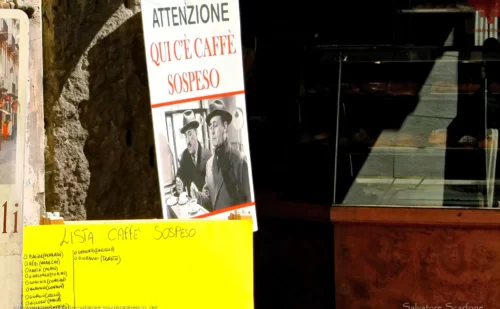
Neapolitans are notoriously good-hearted people: the tradition of the suspended coffee is typically Neapolitan, where anyone who wants can enter a bar and pay in advance for a coffee for the poor who can then enter and drink it for free.
What to eat in Naples?
This is a very small selection of the vast Neapolitan cuisine. Put on baggy pants and get ready to gain weight!
You don’t necessarily need to go to well-known places to eat well, for example you can find an exceptional wallet pizza in many places, even in a rotisserie

